Deals of the Week Vibrant North Africa Up to 50% OFF


Northern Lights Tours & Trips
The northern lights, or aurora borealis, are the world’s greatest light spectacle, a testament to the Earth’s raw and untamed beauty, an experience that transcends words. Imagine standing in silent reverence beneath the emerald, violet, and pink hues that paint the sky with luminous brushstrokes. The crisp Arctic air tickles your skin while the world around you fades away. This is a moment that etches itself into your soul forever. Spark your sense of wonder—whether it’s in Iceland , Finland , Norway or Alaska —and we guarantee you a transformative adventure! Are you ready to chase the magic?
6211 reviews on
Over 150 northern lights trips with 1000+ reviews
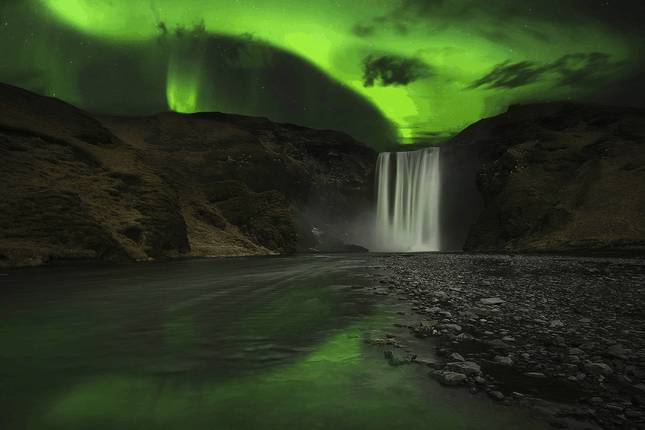
6 day Guided tour | Hidden Powers & Northern Lights Hunt - Small Group
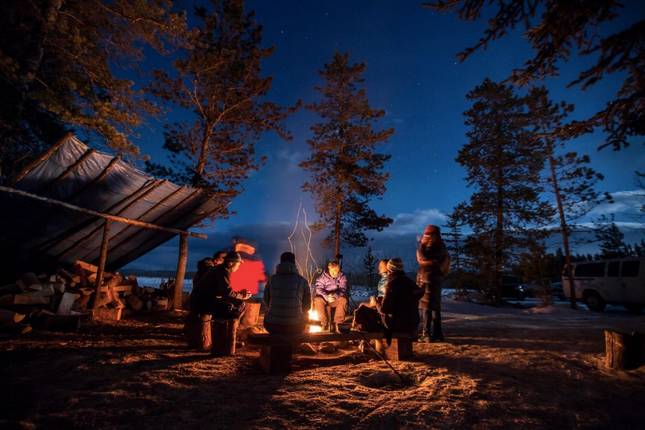
Aurora Borealis Adventure from Vancouver
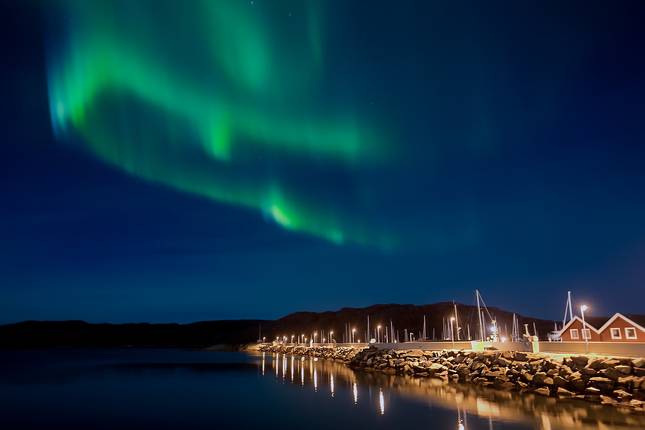
Tailor-Made Private Norway Trip to Chase the Northern Lights
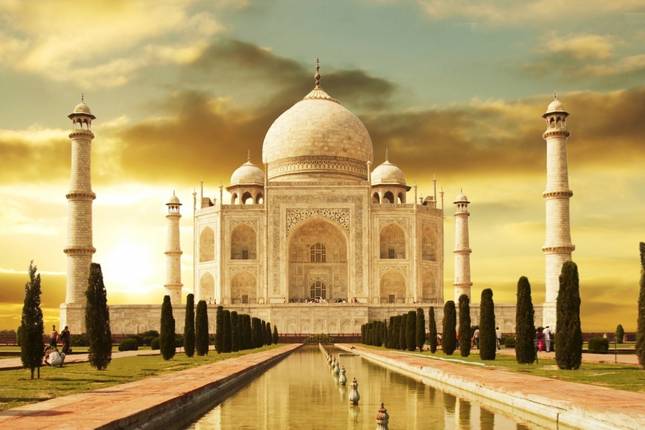
8 Days Private Golden Triangle with Varanasi

6 day Guided tour | Hidden Powers & Northern Lights Hunt

What are northern lights?

Where can you see the northern lights?
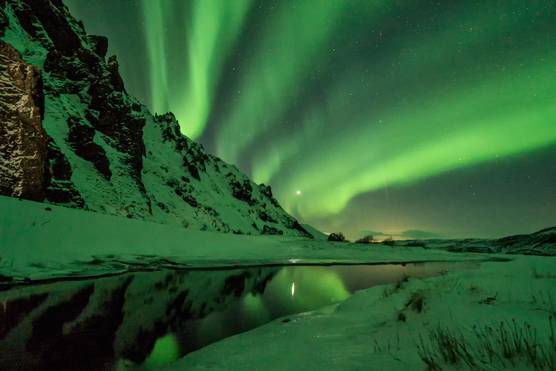
When is the best time to see the northern lights?
Best places to see the northern lights.
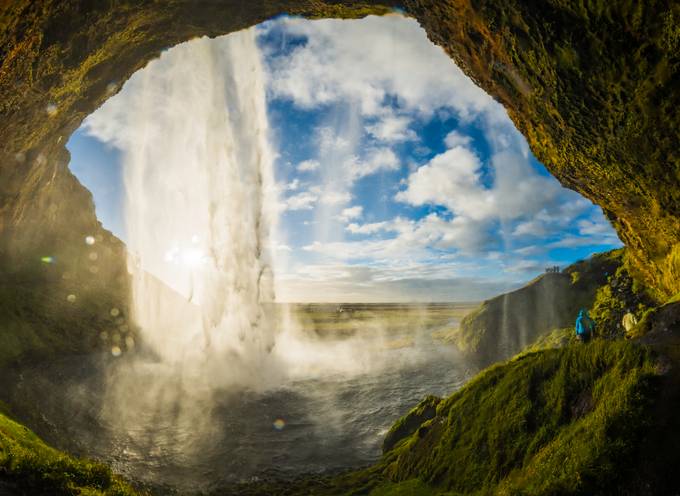
Best northern lights tour experiences
Reindeer safari.
Get to know the fascinating reindeer and how they shaped the local culture and traditions of the Sami people of the Nordic countries. Especially in Finland, it's an experience not to be missed as Rovaniemi is the “Official Home of Santa Claus!”
Sleeping in an igloo
Whether you opt to sleep in a traditional snow structure (they’re surprisingly cozy!) in Canada or Sweden or a specialty glass dome in Finland or Iceland to enjoy the northern lights in style, a night spent in an igloo is a night you won’t forget!
Snowmobiling
How about a thrilling snowmobile ride across a vast frozen lake or through a snow-covered forest while the northern lights dance? Try it in Alaska, where you can encounter an incredible array of wildlife, or Iceland, to see as much jaw-dropping scenery as possible.
Cross-country skiing and snowshoeing
A centuries-old pastime in wintry countries, cross-country skiing or snowshoeing is a smooth approach to exploration. Imagine silently forging a trail through the landscape covered in fresh snow while spotting wild, native animals!
Dog sledding
Learn all about the practice of dog sledding, an essential part of the culture of the Arctic for transport, racing, and sport. Swooshing through the landscape behind a group of exhilarated dogs excited to hit the trail is a one-of-a-kind experience!
A fat bike, or a bike with oversized tires, is the perfect way to speed through the snow! Get that off-trail excitement you deserve, cycle along black-sand beaches in Iceland, over frozen lakes in Finland, and through dense forests in Alaska.
Current deals on northern lights trips
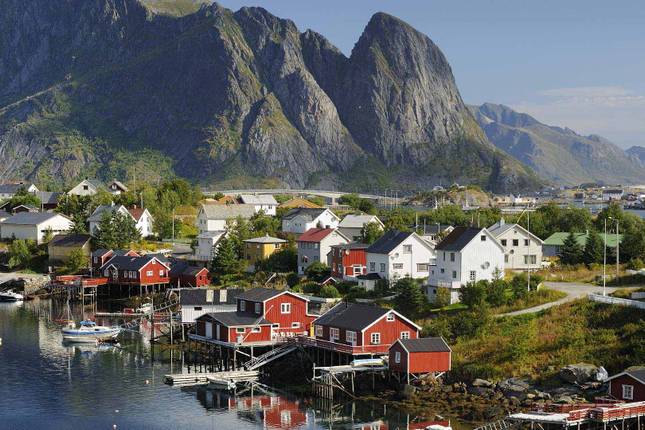
Magic of Finland & Arctic Adventure with Northern Lights & Glass Igloo
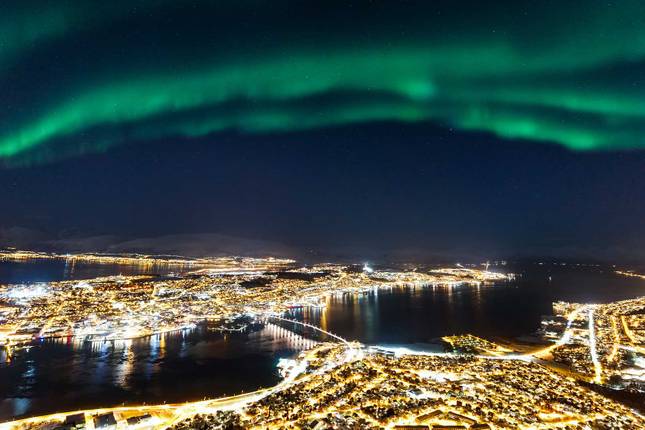
Best of Northern Norway Classic - 71° North Cape ( Private Tour)

Land of the Northern Lights - 5 days
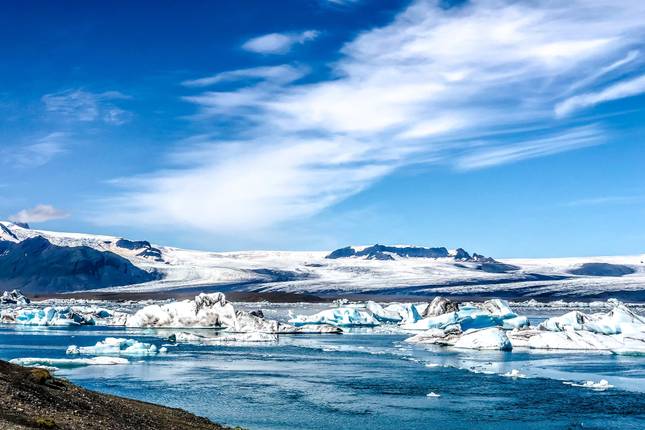
Northern Lights Exploration - 8 days
Best operators for northern lights tour packages.

Intrepid Travel
8,728 reviews

On The Go Tours
2,105 reviews

Insight Vacations
636 reviews

G Adventures
13,413 reviews

37,784 reviews

7,790 reviews

1,898 reviews

Marina Travel

308 reviews

Arctic Adventures
1,296 reviews

Iceland Travel
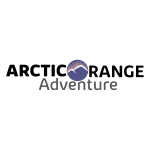
Arctic Range Adventure
Other adventure styles you might like, photography.
20,077 Tours
Your northern lights trip questions, answered
Is it guaranteed i will see the northern lights during my trip.
While there certainly are things you can do to increase your chances of seeing the northern lights (see above), there are no guarantees that travelers will see them . However, the chances increase with an organized adventure alongside an experienced guide . Anything from sun activity to cloudy weather can make the difference between seeing the aurora borealis and not! The best option is to choose a destination you’d be happy with regardless of whether you see the northern lights.
What other activities are offered during a northern lights trip?
Depending on the adventure you choose, travelers can often enjoy many other activities while hunting for northern lights! The adventurous can enjoy dogsledding, skiing, snow-shoeing, and snowmobiling , while those looking for a slower pace will love the many museums and cultural offerings at many northern lights destinations. Of course, the gorgeous nature is an attraction in itself!
Can you see the northern lights when there is a full moon?
A popular misconception about viewing the northern lights is that a full moon negatively impacts visibility. Thankfully, that is simply not true! The Northern Lights can and do appear on nights with full moons , and many photographers appreciate the moon’s presence in their shots.
How long do the northern lights last?
As with many questions about the northern lights, the answer to this is: it depends. On active nights, the aurora borealis can be seen all night long. However, at other times the spectacle only lasts for a few minutes . The weather patterns that cause the lights are not always easily tracked, and therefore it’s not possible to know exactly how long each display will last. But specified apps will provide help in finding out where the activity is high.
Do I need travel insurance for a northern lights trip?
Travel insurance is mandatory for most of the organized adventures on TourRadar and must be purchased before you start your travels. It covers trip cancellations, medical emergencies, lost or stolen baggage, and more. You can simply add travel insurance with Cover Genius directly to your TourRadar booking.
How do I book a northern lights tour on TourRadar?
Find your next northern lights tour package by perusing our tours by choosing your dates and destination, and use our handy filters such as must-see city or budget, and you’ll find the one calling your name. Then you simply fill out your details to secure your organized adventure. If you have any questions along the way, our Travel Experts are standing by 24/7!
What should you wear on a northern lights tour?
When embarking on a Northern Lights tour, dressing appropriately is crucial to ensure a comfortable and enjoyable experience. Layering with a waterproof and windproof insulated jacket is key. Gloves, a scarf and a warm head covering are also important to avoid getting chilled. Thermal socks and boots will keep your feet warm in the snow. After all, remember, it's not unusual for you to spend a lot of time outside.
Are there Northern Lights tours for seniors?
There are no specific Northern Lights tours for seniors, however, all of our organized adventures are age-graded so you can easily find out if the tour is suitable for you. An additional helpful note to the tour descriptions is our physical rating filter function. This helps you assess how active the Northern Lights trip will be.
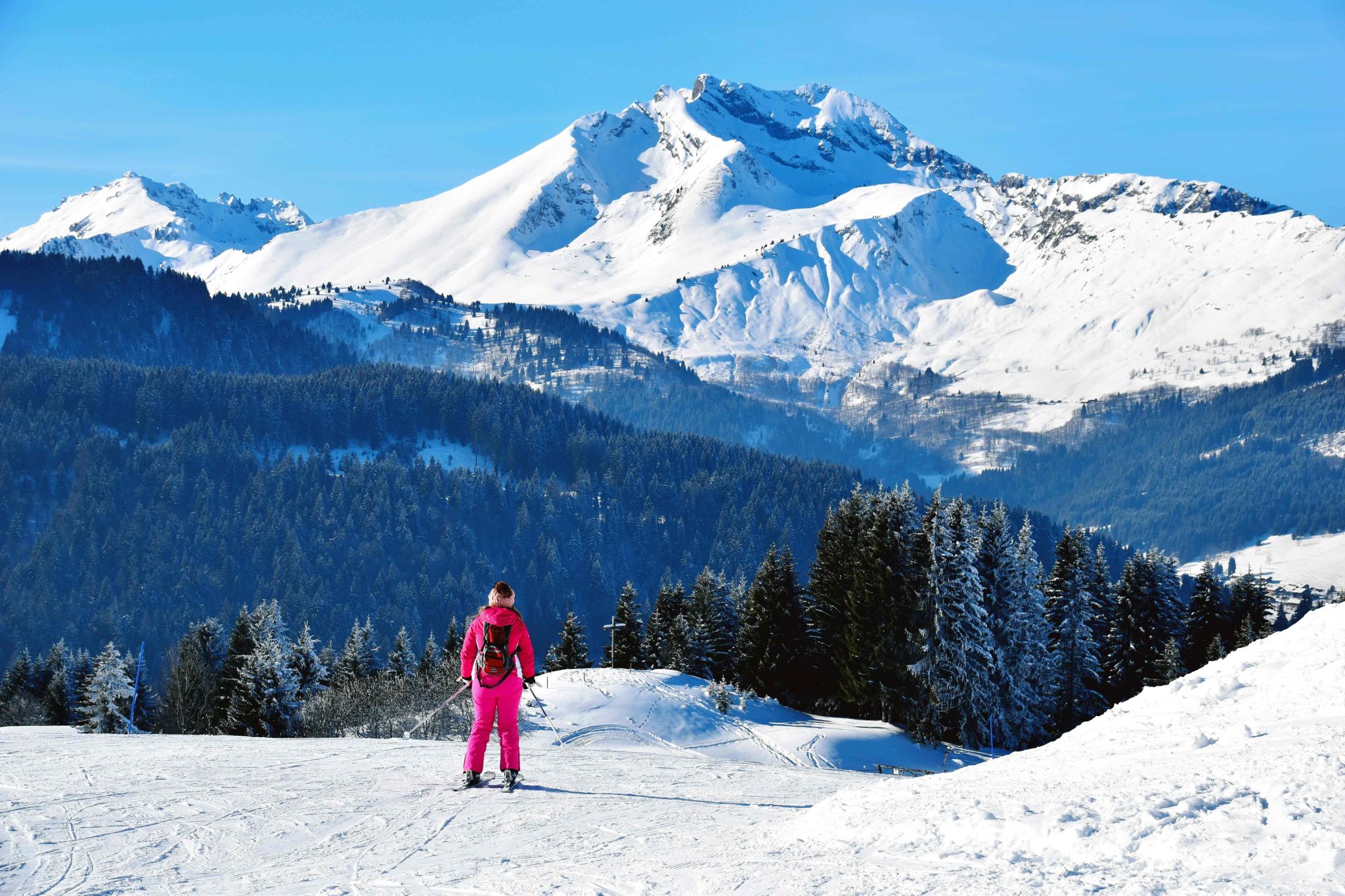
The Best Winter Activities in Europe
Mary Novakovich
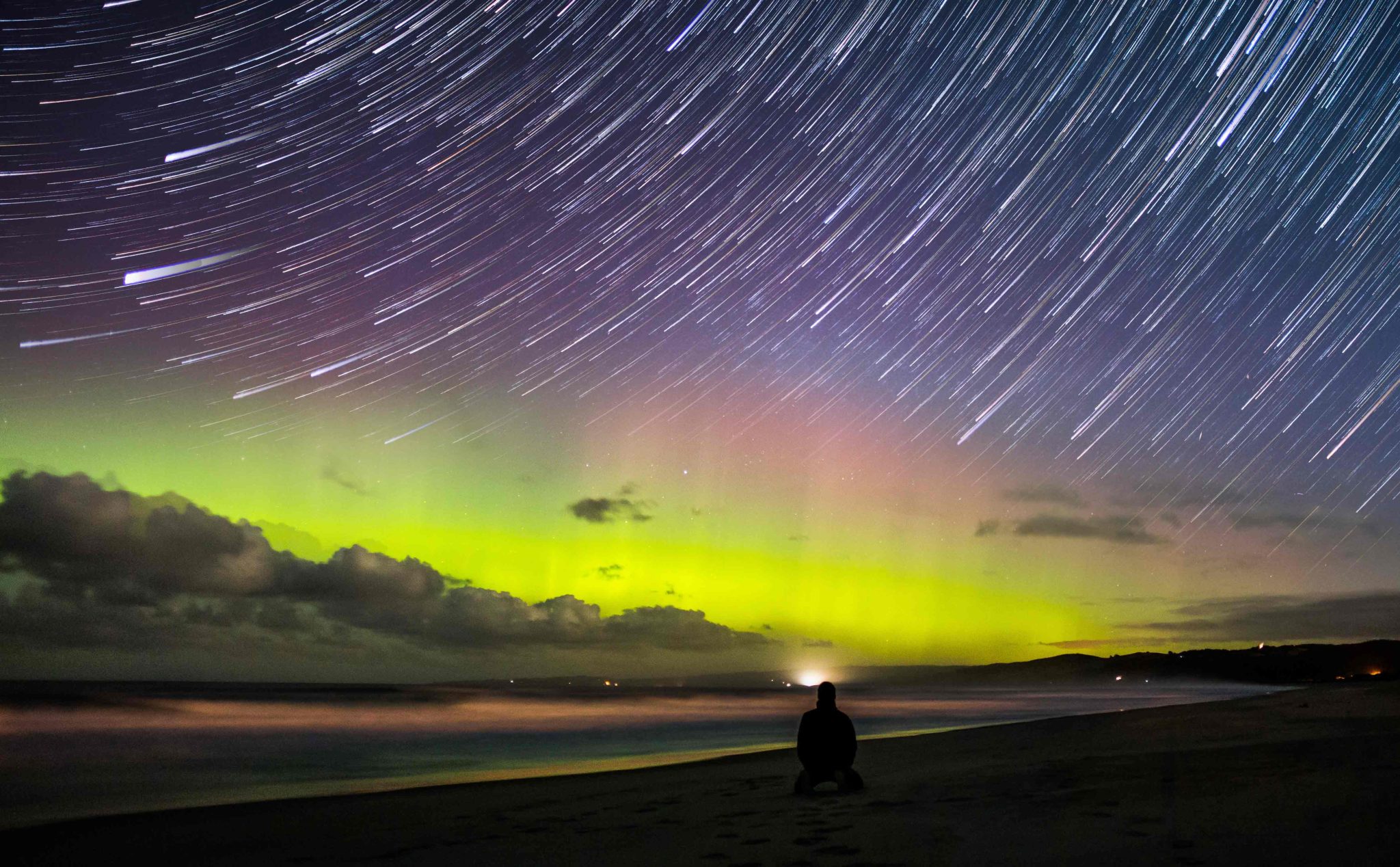
Southern Lights vs. Northern Lights: What’s the Difference?
Randi Gollin
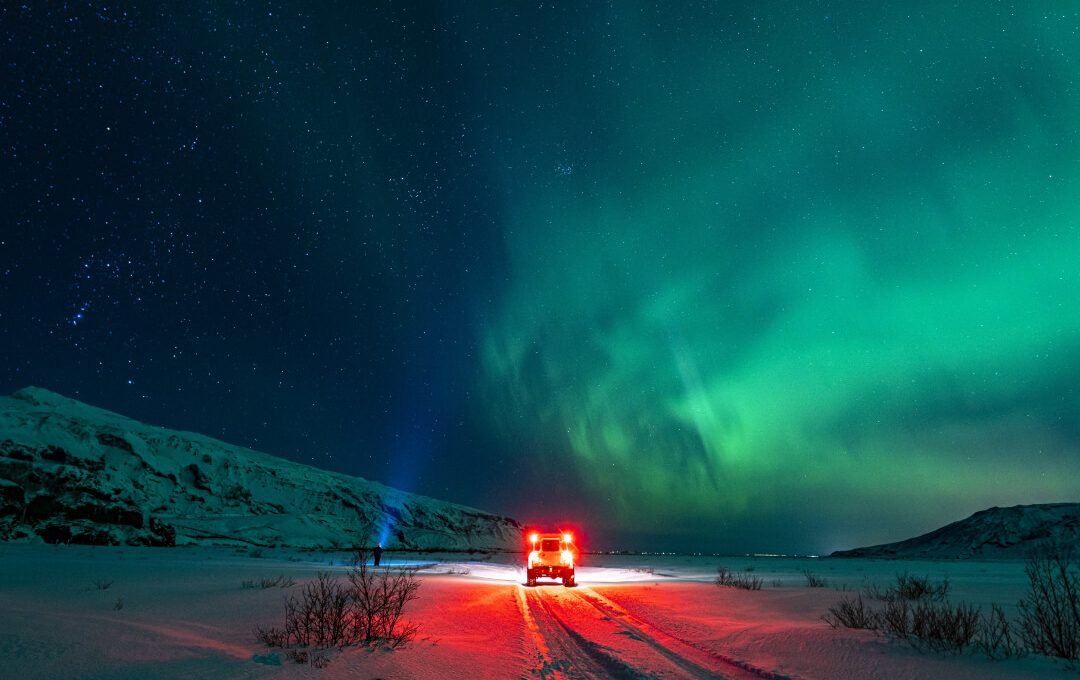
How to Photograph the Northern Lights with a Smartphone or Camera

The Best Time to See the Northern Lights in Norway
Jesse Warner
24/7 customer support

Our team of experienced tour specialists has traveled to hundreds of countries around the globe and has decades of first-hand travel experience to share. Contact us now to have all of your tour-related questions answered!
People also visited
- Rwanda Safari
- North America Tours
- Belgium and Netherlands Summer tours
- Australia Private tours
- Austria and Italy Budget tours
- USA 10 day tours
Thanks for visiting nordicvisitor.com! For the very best browsing experience on our website, we urge you to upgrade to the most recent version of your browser . Some of our site features may not function properly on older versions.
- Travel Update
- Search Suggested Results View All Results
- EUR (€)
- GBP (£)
- Self-Drive i
- Privately Guided i
- Guided Small Groups i
- Northern Lights i
- Honeymoon & Romance i
- Ice & Snow Hotels i
- Multi-Country Tours i
- All Travel Styles
- Show all tours
- Best Sellers
- Special Offers
- Scandinavia
- Switzerland
- United Kingdom
- Book With Confidence i
- Why book with us i
- Booking Terms i
- Sustainability Policy i
- Manage Booking
- Privacy policy
Iceland Bíldshöfði 20 110 Reykjavík +354 578 20 80 View Map
Sweden Scotland View Details
Northern Lights Tour Packages
Venture to the northern hemisphere to hunt for the aurora borealis and see this breathtaking natural phenomenon first hand. Your northern lights tour package with Nordic Visitor comes with accommodation, activities and transport included.

Witness the aurora borealis dancing above you and explore jaw-dropping landscapes in the Land of Fire and Ice.
Why choose northern lights tours in Iceland?
- Chase the lights on guided excursions from Reykjavík
- Stay at remote lodges with dark skies for aurora viewing
- Discover natural wonders like glaciers and ice caves
- Bathe in hot springs surrounded by wintry scenery
Golden Circle Classic - Winter
Golden circle, blue lagoon & northern lights, northern lights circle tour, iceland's famous ring road.

Winter Highlights & Northern Lights
Ice cave & glacier lagoon.

Hunt for the aurora borealis in Norway and admire the dramatic mountains, coastline and islands of the north.
Why go aurora-hunting in Norway?
- Marvel at the lights on an aurora coastal cruise
- Embark on a dog sledding northern lights safari
- Enjoy guided aurora excursions from Tromsø
- Stay at the extraordinary Kirkenes Snow Hotel
Northern Lights by Train and Cruise
Tromsø, flåm & the fjords, best of northern norway classic - 71° north cape, northern lights & cruise, northern lights norway classic.
Experience snowy scenery, Sami culture and winter activities in Finnish or Swedish Lapland on a northern lights adventure.
Why chase the northern lights in Lapland?
- Enjoy an enchanting aurora tour by snowmobile
- Gaze up at the northern lights from a cosy glass igloo
- Stay in a room made of ice at the legendary ICEHOTEL
- Witness the aurora dancing above Abisko National Park
Best of Lapland - Guaranteed Departure
December 18, 2024, best of rovaniemi - classic, santa claus village & dog sledding, lapland adventure - aurora sky station & icehotel.
Journey to a remote land and seek out the northern lights in Svalbard, an Arctic archipelago at the edge of the world.
Why look for the northern lights in Svalbard?
- Experience the mesmerising light of the polar night
- Visit the world’s northernmost town, Longyearbyen
- Go on thrilling dog sledding and snowmobiling tours
- See polar bears and seals in the wild
Best of Svalbard Winter - Express
Best of svalbard winter - classic, need any help so far get in touch with us.
Live chat with travel consultants
Send your queries using our contact form
Call us toll-free to ask your questions
About Your Northern Lights Vacation
Discover the magic of the aurora borealis* on an unforgettable northern lights tour. Explore beautiful destinations in the Nordics on an itinerary that local travel experts have meticulously organised for you.
When you book a northern lights tour package with Nordic Visitor, you get:
• An authentic travel experience planned by an established and trusted agency • A dedicated travel consultant to organise your tour • All relevant bookings for your chosen package • A detailed online personal itinerary • Handpicked accommodation for a relaxing stay • 24/7 emergency phone support for peace of mind
Nordic Visitor has made it easy to start planning your winter tour. Simply follow these steps:
1. Pick your favourite Nordic Visitor tour 2. Confirm your package 3. Check your confirmation email 4. Book your flights 5. Get ready for your trip
*Please note, the northern lights are a natural occurrence and sightings cannot be guaranteed.
Why choose Nordic Visitor

Book With Confidence
Secure your trip your way with Nordic Visitor. Book a tour with as little as 10% deposit. With a 20% deposit or more, you will receive our Cancellation Protection free of charge. You can also pay the full price right away to guarantee today’s exchange rate. Terms & conditions apply.

Trusted local travel experts
Established in 2002, Nordic Visitor is a highly rated tour agency in Northern Europe. Our travel experts create authentic journeys filled with the best activities and destinations. They are locally based and add their in-depth knowledge to all northern lights itineraries.

Great reviews
Nordic Visitor is dedicated to the best service quality, and this is reflected year after year when Tripadvisor awards us with their Certificate of Excellence. We also take great pride in our customer feedback: 97% of our travellers say they would recommend us to friends and family.

Stress-free experience
Our travel consultants will plan and book your trip on your behalf. You’ll receive a personalised itinerary with your accommodation and activities all arranged for you. That way you can leave all the practicalities to someone else, while you relax and look forward to your northern lights adventure.
Flexible tour options
The Nordic Visitor travel team has designed our northern lights packages to include the very best routes and experiences. However, if you’d like to add extra nights, attractions or destinations, your personal travel consultant will happily tailor your northern lights package.

You are in good hands
Should you encounter any unexpected weather or events during your tour, don’t worry. Nordic Visitor will be there for you throughout your trip. We will take care of reworking your itinerary while keeping you safe and informed. You’ll also have access to our 24/7 emergency helpline for peace of mind.

Full financial protection
With Nordic Visitor, you have peace of mind knowing your tour arrangements with us are 100% financially protected. Your payments are safeguarded as we comply with European Union laws on Package Travel regulations. This guarantees you a refund in the unlikely event of insolvency.
NORTHERN LIGHTS TOUR REVIEWS
Here’s what our wonderful customers liked about their northern lights experiences.
Larus made the whole experience of organising the holiday very enjoyable. We are not seasoned travellers but... read more
Larus made the whole experience of organising the holiday very enjoyable. We are not seasoned travellers but this experience has given me no doubt in using Nordic Visitor again to book a holiday in the future to another Nordic destination.
Kim Singapore
Overall an amazing experience, accommodation were excellent, transfers and check-in were smooth. Will certainly use... read more
Overall an amazing experience, accommodation were excellent, transfers and check-in were smooth. Will certainly use Nordic Visitor again for future vacations.

Northern Lights Vacation Highlights
Picture yourself in a stunning winter landscape in the northern hemisphere. You’re wrapped up warm and the world’s greatest light show is about to begin. Opt for a Nordic Visitor northern lights tour, and you could…
- Take a guided tour from Reykjavík to hunt for the northern lights in Iceland
- Explore ice caves on a guided glacier hike in Vatnajökull , home to Europe’s largest glacier
- Venture to the remote Westfjords to chase the aurora and try snowshoeing
- Go dog sledding and snowmobiling in Tromsø , Norway, or Longyearbyen , Svalbard
- Discover charming fishing villages, mountains and marine wildlife in the Lofoten Islands
- Sample Norwegian delicacies in Kirkenes , such as red king crab, Arctic char and cloudberries
- Join an unforgettable snowmobiling , dog sledding or snowshoeing aurora safari in Lapland
- Visit the Aurora Sky Station in Abisko National Park for dinner with a view of the northern lights
- Stay in an ice hotel or glass igloo, such as the ICEHOTEL , SnowCastle or SnowHotel
FREQUENTLY ASKED QUESTIONS ABOUT NORTHERN LIGHTS TOURS
For tips on viewing the northern lights, read on. We’ve answered the most commonly asked questions about Nordic aurora borealis tours here to help you make your dream trip a reality.
Alternatively, find out how to make a booking , have a look at our FAQs , or learn about our Book With Confidence travel plan.
1. ARE THE NORDICS SAFE TO TRAVEL TO?
Yes, the Nordics are widely regarded as safe for visitors. Actually, the Nordic nations – Iceland, Sweden, Norway, Denmark and Finland – continually rank among the top 10 safest places in the world . This is because they have low crime rates, good standards of healthcare, and excellent road safety.
2. WHAT ARE THE NORTHERN LIGHTS?
The northern lights, or aurora borealis, are a natural phenomenon. You can see them illuminating the sky when charged particles from solar flares collide with atoms in the Earth’s atmosphere, near the North Pole. This collision creates varied shapes and colours that ripple, flash or glow in the sky.
3. WHAT MONTHS CAN YOU SEE THE AURORA BOREALIS?
You have the best chance of spotting the aurora borealis in the winter months – October to April. To make out the colours of the aurora, you need dark winter nights. In the summer, daylight hours are so long that you’ll find the sky is too bright to see the glowing lights.
As it is a natural occurrence, spotting the northern lights is not guaranteed. But you can increase your chances of witnessing them by visiting the Arctic Circle in winter.
4. WHEN IS THE BEST TIME TO SEE THE NORTHERN LIGHTS?
As you need a dark sky to distinguish the aurora, the best time to see the northern lights is at night. The peak hours tend to be between 11 PM and 2 AM, which is why your guided tour will likely depart after 9 PM.
You could also stay at a hotel with an aurora wake-up service. The staff will let you know if the lights come out late in the night, so you don’t have to stay up waiting for them!
The best time of year to see the northern lights is winter, between October and April. This is when Nordic nights are the longest and darkest, which means you have higher chances of catching sight of the aurora.
Winter is a great time to visit the Nordics for other reasons too. Check out these guides to the top winter activities you can enjoy:
Things to do in Norway in winter
Things to do in Iceland in winter
Things to do in Lapland in winter
5. WHERE IS THE BEST PLACE TO SEE THE NORTHERN LIGHTS?
You can see the aurora borealis at high northern latitudes, especially around the Arctic Circle, as this is where solar activity is strongest. That’s why the Nordic region is the best place to see the northern lights. Iceland, Norway, Sweden, Finland and Svalbard all lie within or near the Arctic Circle.
In fact, Iceland and the northern regions of Norway, Sweden and Finland are located within the “aurora zone”. Also known as the “northern lights belt”, this is a latitudinal band between 65-72°N where high auroral frequency and intensity occurs. Visit this zone for the best chance of seeing the aurora.
Learn more about where and when to see the northern lights with these expert guides:
Best times and places to see the northern lights in Europe
Best times and places to see the northern lights in Iceland
Best times and places to see the northern lights in Norway
6. WHERE CAN YOU SEE THE AURORA BOREALIS IN SCANDINAVIA?
Norway, Sweden and Denmark are the countries that make up Scandinavia. If you want to go to Scandinavia to hunt for the aurora borealis, your best bet is to visit the northern parts of this region – Swedish Lapland and Northern Norway. It is unlikely you’ll see the aurora in Denmark.
You can witness the northern lights in the neighbouring Nordic nations of Finland and Iceland too. Although these countries aren’t technically part of Scandinavia, they have many similarities and also happen to be great places to catch the aurora borealis!
Lapland – an area covering northern Sweden and Finland – is a fantastic destination for aurora chasing. You could head to Rovaniemi and Kemi in Finnish Lapland, or Abisko National Park near Kiruna in Swedish Lapland.
Or visit Northern Norway for your aurora borealis tour. Take your pick from Norwegian destinations such as Tromsø, Svalbard, Kirkenes, the Lofoten Islands and Nordkapp (North Cape).
Alternatively, go in search of the aurora borealis in Iceland. With its wide open skies and location near the Arctic Circle, you could see the lights from anywhere in the country. For your best chances though, head away from towns with street lights so you can spot the colours more easily.
In Scandinavia you could seek out the aurora borealis in the countryside or on the coast. Plus, not only can you enjoy northern lights tours, but also bucket list activities like dog sledding, snowmobiling, and staying in an ice hotel.
Discover more reasons to visit Norway, Sweden, Denmark and Finland on our ultimate Scandinavia guide .
7. HOW TO SEE THE NORTHERN LIGHTS?
To see the aurora borealis, you need to be in a northern country on a clear, dark night, away from artificial lights. Although the aurora don’t show up on demand, these top tips will give you the best chances of witnessing them.
Firstly, make sure you visit northern regions close to the Arctic Circle. Iceland, Northern Norway, Svalbard and Lapland are the best destinations to see the northern lights in Europe.
Secondly, time your aurora borealis tour for the European winter. The long, dark nights will help you spot the colours lighting up the sky.
Thirdly, avoid light pollution found in built-up areas. This means heading into the countryside where there is less artificial light compared to towns and cities. You could spend some days out in remote areas, or opt for guided evening tours from your city base instead.
Another thing you can do for northern light viewings is check the weather and aurora forecast . Although you can’t do this very far in advance, during your trip you’ll be able to find out if the evening will be clear of cloud or rain and if solar activity will be strong.
You’d also increase your chances of seeing the aurora borealis by taking a guided tour. A local expert would accompany you and take you to all the best spots, sharing their insider knowledge with you.
Read our article on how to see the northern lights for more viewing tips.
8. HOW LONG DO THE NORTHERN LIGHTS LAST?
When the aurora borealis are treating you to their glorious light show, you might find they glow for a few minutes. The lights can show up several times in one night, or last for a couple of hours in one go.
There is no rule as to how long the aurora borealis last, of course, as they are a natural occurrence. If you see them for yourself, no doubt you’ll cherish every second of their beautiful magic.
9. HOW DO YOU PHOTOGRAPH THE AURORA BOREALIS?
The northern lights can be tricky to capture on camera, but with some preparation and the right equipment you can do it. Here are some top tips for photographing the northern lights:
- Use an SLR camera with manual focus
- Bring a tripod as you’ll need to do a long exposure shot
- Get a remote shutter release so you don’t have to touch the camera at all
- Use a slow shutter speed of between 15 and 30 seconds
For more tips on photographing the aurora, see our northern lights travel guide .
10. WHAT SHOULD YOU WEAR TO SEE THE NORTHERN LIGHTS?
It can get rather cold in the Nordic winter, especially if there’s a cool wind. The last thing you want is to feel the chill while you hunt for the aurora borealis at night. That’s why it’s important you pack the right clothing before your trip.
Many northern lights tours will provide you with thermal suits to help you stay warm while you’re out chasing the aurora. It’s also recommended that you wear warm layers underneath.
Here is an essential packing list:
- Insulated jacket and trousers (windproof and waterproof)
- Thermal wool underlayers
- Warm hat, gloves and scarf
- Warm and sturdy boots
Get more packing advice by reading our experts’ tips and tricks on dressing for northern lights viewing .
11. CAN I CHOOSE THE ARRIVAL DATE?
Yes, you can select your chosen arrival date online when reserving your Nordic Visitor tour. For northern lights packages, the arrival dates are between October and April as this is the aurora viewing season.
12. CAN I EXTEND MY TOUR BY A DAY OR TWO?
Absolutely! If you’d like to spend more time in a particular destination, you can request this when booking your tour online. Your dedicated travel consultant will get in touch to confirm the extra days with you.
If you are taking a small group tour, you can add extra nights to the start or end of your trip. This is because the group tour itself is fixed as you will be exploring with fellow visitors on a fixed itinerary.
13. WHEN SHOULD I BOOK MY FLIGHT TICKETS?
You should book your flights once your Nordic Visitor package is confirmed. We recommend you check flights beforehand to find appropriate dates and prices, but only purchase them after your travel consultant has secured your northern lights tour.
Your Nordic Visitor consultant will send you a confirmation email with all the details you need to buy suitable flights.
14. WHAT SHOULD I PACK FOR MY TRIP?
The weather is somewhat unpredictable in the Nordics, no matter the time of year you visit. In winter you should always come prepared for cold temperatures, which means bringing warm clothing. Here are the essential items that we recommend you pack for your trip:
- Warm jumpers or fleeces
- Waterproof and thermal jackets
- Gloves, scarves and hats
- Insulated, waterproof boots
- Thermal underlayers
- Waterproof trousers
For more detailed information on what to pack for your Nordic tour, read our travel guides for Iceland , Norway and Lapland .
Get in touch with us to start planning your trip or for more advice on how to see the aurora borealis. Our travel experts will be delighted to arrange an unforgettable northern lights tour for you.
Our main phone number is +354 578 20 80
How about a live chat with one of our local travel experts
Blog Articles
How to see the northern lights: viewing tips, best times & places to see the northern lights in europe, best times and places to see the northern lights in iceland, a little something about the northern lights.
Whether you have a single question or a special request, we're here for you.
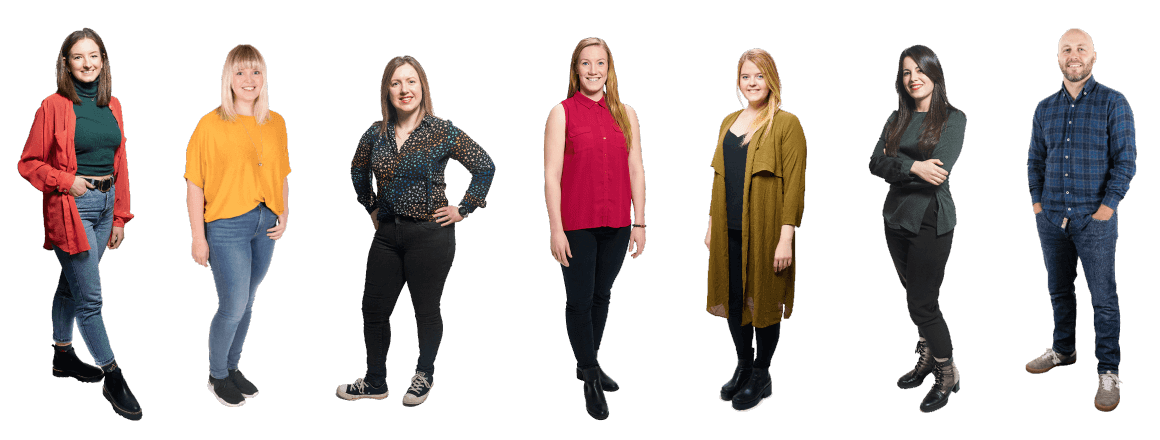
Bookings & Enquiries
Aurora borealis tours, best tours to see the aurora borealis.
Witnessing the phenomena of the Aurora Borealis, or Northern Lights is a tour highlight when visiting our Northern region in late autumn, winter and early spring.
When will I see the Aurora Borealis?
If your holiday is well planned, the answer is often yes. However, most people will appreciate that the Aurora is a natural phenomena, and part of their attraction lies in the fact that they cannot be controlled or even properly predicted. What we can do is to get you to the best locations at the right time. This may mean allowing for common weather patterns, and/or travelling either inland or out to the coast. It nearly always means getting you out of populated areas with light pollution, and into the exotic wilderness with plenty of great daytime activities to guarantee a memorable experience!
When to go see the Aurora Borealis?
The period between November and March is generally the best time to see the Aurora Borealis. However, they can also be seen in late September, October and early April. Other times of year there is not enough darkness. October and November tend to see a lot of windy and wet weather, which of course means cloud cover and less chance to see the lights. Our favourite months are mid January, February; March, which means plenty of darkness in the peak viewing period between 6pm and midnight, and plenty of daylight to enjoy other winter activities. Check out the daily Aurora Sighting website here .
What are the Aurora Borealis?
The ultimate energy source of the aurora is the solar wind flowing past Earth and touching its magnetic field. Aurora starts when explosions in the sun send off particles into space. These particles are charged and form the solar wind. When solar wind hits Earth's magnetic field in the Polar areas where the magnetic shield is less powerful, it collides with particles in our atmosphere creating electricity and light. It is this light that we see as the Northern Light or Aurora Borealis.
The Aurora awed the ancient people. Aurora was the Roman goddess of the dawn. Boreas is a Greek word for the north wind; thus, the northern lights. The Finnish word for the lights, 'revontulet', comes from a Sami legend where the tail of a fox running on along the snow covered fells strikes the snow drifts and sends a trail of sparks high up to the sky. Revontulet literally means foxfires. The Vikings believed that the Aurora was a beautiful maiden called Valkyrias who escorted those killed in battle to the gods. The Sami people of Lapland also believed they had power over the lights, and whistling under them would cause them to come closer. Many ancient people would not stare at or speak of them, due to a fear of insulting their divinity.
See daily aurora viewings here. With more than 40 tours that get you in the right spot to see the Aurora Borealis , we can help you tick them off your list.
Northern Lights Tours & Vacations

Unpredictable and awe-inspiringly beautiful, the Northern Lights are nature’s most dazzling display.
Our Northern Lights trips take you to some of the world’s best locations for witnessing this spectacular event. Whether it’s heading to Iceland’s remote Lake Myvatn, cruising among Greenland’s glaciers, watching the lights dance across the Canadian Rockies or traveling by dogsled into Finland’s northern wilds, Northern Lights tours with Intrepid give you the best seats in the house for one of this galaxy’s most stunning natural performances.
Our Northern Lights trips
Let's create an exclusive trip for your group.
Northern Lights highlights
Northern lights tour reviews.
Filter by rating
Iceland's Golden Circle in Depth
Iceland Express
Iceland Discovery
Articles of Northern Lights
Why 2024 is the best year to see the northern lights
Top 12 things to do in Iceland
What to expect on an Iceland Northern Lights tour with Dr John Mason
Why the Canadian Rockies are the best place on earth to see the Northern Lights
What it’s really like watching the Northern Lights in Iceland
7 reasons to consider a winter trip to Iceland
5 reasons Finnish Lapland should be on your bucket list
6 experiences every traveller should have in Iceland
Where can you see the Northern Lights?
Northern lights travel faqs, do i need a covid-19 vaccine to join an intrepid trip.
Trips from 1 January 2023 onwards
From 1 January 2023, Intrepid will no longer require travelers to provide proof of vaccination against COVID-19 (excluding all Polar trips and select adventure cruises).
However, we continue to strongly recommend that all Intrepid travelers and leaders get vaccinated to protect themselves and others.
Specific proof of testing or vaccination may still be required by your destination or airline. Please ensure you check travel and entry requirements carefully.
When is the best time to see the Northern Lights?
The Northern Lights are at their peak from late September to late March.
Where can I see the Northern Lights?
The best places to see the Northern Lights are all located in the “Auroral zone” – an area that stretches around the Northern Hemisphere at a latitude of about 66 to 69 degrees north – including parts of:
What causes the Northern Lights?
The Northern Lights are caused by electrically charged particles from the sun colliding with elements in our atmosphere (such as nitrogen and oxygen), creating brightly colored dancing displays of light.
Am I guaranteed to see the Northern Lights?
While Northern Light displays can never be guaranteed, as they are a natural phenomenon, our local leaders do their best to ensure you get to see nature’s greatest spectacle.
Can the Northern Lights be predicted?
Yes, the Northern Lights can be predicted to some extent.
The activity level of the Northern Lights depends on many things (of which some are predictable and some are somewhat random), including sunspots, coronal holes, solar flares and geomagnetic activity.
If you’re not an astronomer, your best bet is to check the local Aurora forecast – a KP-index number of 3 or higher means you have a good chance of seeing the Lights.
Can I see the Northern Lights with the naked eye?
Yes, you can see the Northern Lights with the naked eye. Humans can most easily see the green and white of the lights at night. A camera, however, does not have the same limitations as the human eye, so the colors may appear brighter and more brilliant in photos.
Can I photograph the Northern Lights?
Of course! There is no magic recipe for capturing the Northern Lights. Still, you’ll want to set your camera on a tripod and ensure it has a manual mode functionality, so you can adjust the aperture and shutter speed to capture the spectacular display best.
Are Intrepid trips accessible for travellers with disabilities?
We are committed to making travel widely accessible , regardless of ability or disability. We do our best to help you see the world, regardless of physical or mental limitations.
We are always happy to talk to travellers with disabilities and see if we can help guide them toward the most suitable itinerary for their needs and, where possible, make reasonable adjustments to our itineraries.
Protect Your Trip »
The 18 best places to see the northern lights.
Check the aurora borealis off your bucket list.
The Best Places for the Northern Lights

Getty Images
The northern lights, known as the aurora borealis, are a spectacular natural light show visible at certain times of the year in the Northern Hemisphere. They occur when electrically charged particles from the sun collide with gases in the Earth's atmosphere, creating vibrant streaks of blue, green, pink and violet dancing across the night sky. 2024 and 2025 are an excellent time to catch the northern lights: Solar activity will be at a peak, making for a more impressive experience, if you're in the right place.
The best places to see the aurora borealis have little light pollution, clear skies and no precipitation. The lights are only visible at northern latitudes when it's dark outside, so the months from September to April are best for seeing the aurora. There's also a Southern Hemisphere counterpart, the aurora australis; there are fewer easy spots from which to view this phenomenon, but if you're lucky, it can be equally brilliant.
For more information on the northern lights, scroll down to the FAQ section at the bottom of this page. Read on to discover the top destinations where you can see the kaleidoscopic northern and southern lights.
Fairbanks, Alaska

Fairbanks is by far one of the best places in the world to view the northern lights, as it's located directly under the auroral oval. This ring-shaped zone sits around the Earth's geomagnetic North Pole and is generally associated with the most vibrant aurora sightings. Visitors can expect to see the lights on an average of four out of five clear nights during aurora season, which lasts from late August to late April.
You can book a northern lights tour to see the aurora from the springs and tubs at Chena Hot Springs Resort. This excursion includes round-trip transportation to the resort from town, a soak in the hot springs, a visit to the Fairbanks Aurora Ice Museum and an aurora viewing tour; dinner and drinks centered around Alaska produce are an option extra with hot drinks supplied.
There's more to Fairbanks than just the northern lights: If you visit in late summer, consider family-friendly activities like a ride on the Riverboat Discovery or gold panning. For a festive holiday experience in the winter, head around 15 miles out of Fairbanks to visit the Santa Claus House in the city of North Pole. Travelers can also see ice sculptures in February and March at the impressive World Ice Art Championships or take a dog-sledding or snowmobiling tour .
Where to stay: For excellent chances of aurora viewing, book a private igloo at Borealis Basecamp, a top glamping resort located on 100 remote acres of boreal forest about 25 miles from Fairbanks. With activities like dog-sledding on top of aurora viewing, past visitors regularly describe it as a once-in-a-lifetime experience.
Tromsø, Norway

Located about 220 miles above the Arctic Circle, Tromsø is one of several top spots to view the northern lights in Norway. At the darkest point of the aurora season – which runs from September to early April – the sun doesn't rise in this northern part of the country, although there is twilight during the day. With this level of darkness, there are more opportunities to see the aurora.
Tromsø itself is a small but lively city, so there's plenty to see and do when you're not looking up at the sky, including a visit to the beautiful Arctic Cathedral. In late January to early February, the city hosts the Northern Lights Festival, a 10-day music and performing arts event featuring a variety of musical genres.
Aurora chasers can view the lights on their own while in town, but to get a better view, it's recommended to head away from the city lights. Arctic Circle Tours is one company offering guided trips, with small groups for a more personal vibe. Alternatively, adventure-seekers can embark on an exhilarating husky trekking expedition in the Arctic wilderness.
Where to stay: For accommodations with harbor views, look no further than the Scandic Ishavshotel – guests love it for its convenient central location in the city, as well as its plus-sized breakfast buffet with plenty of choices.
Luosto and Rovaniemi (Lapland), Finland

Lapland is located within the Arctic Circle in the northernmost part of Finland. The northern lights are most visible here between the end of August and April – and approximately 200 times a year – so there are many opportunities for aurora spotting. Finnish Lapland is also known as home to the Sámi people (the only recognized Indigenous group in the European Union region), some 200,000 reindeer and Santa Claus – who can be visited in the town of Rovaniemi, the region's largest city and a great base for your aurora expedition.
Consider venturing roughly 70 miles north of Rovaniemi to the resort town of Luosto, set among the picturesque and hilly landscape of Pyhä-Luosto National Park. Here, you can also spend a magical evening outdoors under star-filled skies during a reindeer-drawn sleigh ride through the snow-covered forests. Jaakkola Reindeer Farm offers a reindeer sleigh tour to spot the aurora once weekly; it includes a stop to warm up at a bonfire camp with snacks, hot beverages and local fireside stories.
Where to stay: For a bucket list experience, watch the impressive light show from a glass igloo at Santa's Hotel Aurora & Igloos in Luosto. Past visitors love the cozy atmosphere here, boosted by amenities like saunas and log fireplaces. If you're sticking to Rovaniemi, the Arctic TreeHouse Hotel is a stunning choice, with designer cabins perched among the snow-covered taiga forest.
Orkney, Scotland

This group of captivating (and mostly uninhabited) islands, located about 10 miles off Scotland's remote northern coast, is one of the best places to see the northern nights in the U.K. Fall and winter are the best seasons to witness the aurora, also known in local Shetland dialect as the "Mirrie Dancers," with fall bringing the highest proportion of clear nights. A few places to see the spectacular light show include along the coast at Birsay or the Broch of Gurness, an archaeological ruin on a sweeping and dramatic coastline.
In addition to the aurora, Orkney is home to breathtaking coastal landscapes and more sheep than you can count (try some local lamb, if you can). Travelers can also visit the Heart of Neolithic Orkney, a UNESCO World Heritage Site with several monuments dating back 5,000 years.
Where to stay: During your visit, plan to stay in the historic town of Kirkwall, the capital of the Orkney Islands: The no-fuss Ayre Hotel offers harbor views, and past visitors compliment the hearty meals in the hotel restaurant. Spot the aurora close to town at Inganess Bay and Wideford Hill.
Yellowknife, Canada

Yellowknife, the capital of Canada 's Northwest Territories, dubs itself the "Aurora Capital of the World." Thanks to its position in the middle of the auroral oval, the city puts on one of the world's most awe-inspiring light shows. The period from mid-November to the beginning of April is the recommended time to spot the aurora, but it's also possible to see the aurora during more hospitable weather from late summer to early fall as the lights are visible up to 240 days a year.
Located on the northern shore of Great Slave Lake, Yellowknife boasts winter sports such as ice fishing and cross-country skiing. If you visit in March, plan to attend the monthlong Snowkings' Winter Festival, which features events and activities like a snow-carving competition, a snow castle, live music and more.
For a unique experience, book a tour through Aurora Village to view the lights. The property will pick you up from your hotel and take you to its site, where you can stay warm in a tent while sipping hot beverages. The Aboriginal-owned Aurora Village also offers activities such as dog-sledding or snowshoeing excursions.
Where to stay: Warm up in the fireside lounge at The Explorer Hotel in Yellowknife. Previous visitors note the warm and helpful staff as a strength here.
Jukkasjärvi, Sweden

The optimal time for seeing the illuminated skies in the northern part of Sweden, known as Swedish Lapland, is between early September and late March. The small Swedish village of Jukkasjärvi sits around 125 miles above the Arctic Circle on the Torne River and is an ideal locale for aurora viewing. You'll fly to the nearby Kiruna Airport to get here. With the village's origins dating back to the 17th century, you can still find some of the original homesteads, including an old timber cottage. Today the village boasts 800 residents – and more than 1,000 dogs.
Where to stay: If you're up for a chilly overnight adventure, reserve accommodations at the world's first permanent ice hotel, the aptly named Icehotel 365. Each of its artist-designed suites is sculpted from ice with a unique theme and maintains temperatures around minus 5 degrees Celsius (about 23 degrees Fahrenheit). The rooms also feature beds with reindeer hides and thermal sleeping bags so you can bundle up during the night. While you're at the property, take advantage of the guided "Northern Lights Safari on Snowmobile" or embark on the "Moose Safari on Horseback" atop an Icelandic horse.
Reykjavik, Iceland

October through March is the best time to chase the aurora borealis in Iceland . There are numerous natural parks and attractions throughout the country where you can view the show during the long and dark winter, but the capital city of Reykjavik also offers many options for accommodations, restaurants, tours and other activities for your visit. For optimum aurora viewing in the city away from the light pollution, head to Öskjuhlið. This wooded and hilly area in Reykjavik sits at 200 feet above sea level and has walkways and paths where you can see the nighttime show.
Atop this hill sits Perlan, which houses the only planetarium in the country and a museum featuring exhibits about Iceland. Perlan is also home to the world's first indoor ice cave and glacier exploratorium. During your visit, don't miss the panoramic views of the city from the building's fourth-floor observation deck. From this vantage point, you'll be able to see the Snæfellsjökull glacier; Keilir, a volcanic mountain; and Esja, the mountain of Reykjavik.
Where to stay: While in Reykjavik, splurge on an overnight tour with Buubble Tours. This experience includes breathtaking sightseeing spots and a night spent under the magical northern skies in a transparent bubble at the 5 Million Star Hotel. For longer stays, consider the eco-friendly Eyja Guldsmeden Hotel, with sweeping views of the city – guests love it for its cozy yet chic Scandinavian design.
Southern Iceland

While Reykjavik is a great aurora-viewing spot if you like having amenities close by, consider getting out into Iceland's stunning, otherworldly countryside for a unique backdrop for the northern lights. One unique place to see them is the black sand beach at Reynisfjara (but watch out for the dangerous waves here). Alternatively, head to Jökulsárlón, a glacial lagoon and seal habitat, where the aurora's reflections in the icy water are truly beautiful.
There's no shortage of tours that will stop by these locations and more for possible aurora sightings. Consider a 10- or 13-day tour around the country with Fun Travel, or a four-day option from Arctic Adventures. If you want to do things at your own place, it's also possible to self-drive – just know that road conditions can be icy, particularly in the depths of winter (although Icelandic roads are generally well-maintained).
Where to stay: Hotel Rangá is a formidable option for aurora-spotting. It offers a variety of special amenities, such as aurora wake-up calls, a lookout deck and snowsuits to keep you warm if you're outside viewing the lights. Past visitors praise Rangá for being a comfortable yet luxurious place to relax, be it in the outdoor hot tubs or the cozy and sociable bar.
Kangerlussuaq, Greenland

Greenland may not be the most accessible place to travel for viewing the northern lights, with limited flight options (mostly via Iceland), but those who make it here will be thrilled they did. The tundra of Kalaallit Nunaat – the Greenlandic name for the country – is one of the best places on the globe to see the aurora from September to early April.
For the more adventurous aurora seekers, head to the top of the Greenland Ice Cap for spectacular views of the lights. This impressive glacier covers 80% of the country and is accessible via the tiny town of Kangerlussuaq. Located on a fjord right along the Arctic Circle, the town, often described as a gateway to Greenland, was a former U.S. Air Force base and is now home to Greenland's main airport. The town is known for having clear skies on some 300 nights per year, so chances of a sighting are particularly good here.
Tour company Guide to Greenland offers various tours, from two-hour aurora-viewing trips to a tough but rewarding multi-night dog-sledding expedition across the ice. For a less strenuous experience, companies like Nordic Saga Tours offer cruises through the Arctic landscapes around Kangerlussuaq.
Viking cruise along Norway's coast

Courtesy of Viking
Embrace the winter and set sail for the Arctic Circle to experience the aurora in northern Norway. The 13-day "In Search of the Northern Lights" cruise itinerary with Viking departs from London for the North Sea with stops in ports of call that are top aurora-viewing locales, including Tromsø, Alta and Narvik, plus a stop in Amsterdam en route. The cruise ends in Bergen, Norway.
While on land, take in the natural beauty of the snow-blanketed landscapes and book bucket list excursions like a night spent in an igloo or a reindeer sledding adventure. You can also chase the lights into the wilderness by snowmobile, take a dog sled ride under the stars or view them from a Sámi tent atop the mountain Pæska in Alta. This Viking Ocean Cruises itinerary is offered with departure dates from mid-January to mid-March.
Headlands International Dark Sky Park, Michigan

Regarded as one of the top spots in the U.S. to see the aurora outside Alaska, Headlands International Dark Sky Park sits at the top of Michigan 's lower peninsula, less than 5 miles from Mackinaw City. While the northern lights are less common here due to the relatively southern location, the best time to catch a glimpse of this phenomenon is typically during the spring and fall – and appearances can usually be predicted a couple of days in advance. The park even maintains an online Clear Sky Chart so you can check the weather forecast before you go.
There are also other stargazing opportunities throughout the year at Headlands. During the summer months the Milky Way is visible across the sky, and late summer evenings entertain visitors with meteor showers.
Where to stay: If you're visiting between late April and the end of October, splurge on a stay at Mission Point Resort on Mackinac Island, where the aurora should also be visible. Guests describe this iconic property situated along the shoreline of Lake Huron as positively charming, thanks to its historic nature and manicured grounds. The resort also offers a host of outdoor activities from bike rentals to swimming.
Tips on Trips and Expert Picks Newsletter
Travel tips, vacation ideas and more to make your next vacation stellar.
Sign up to receive the latest updates from U.S News & World Report and our trusted partners and sponsors. By clicking submit, you are agreeing to our Terms and Conditions & Privacy Policy .
Voyageurs National Park, Minnesota

Martha Shuff | Courtesy of Voyageurs National Park
Located on the international border between Minnesota and Ontario, Voyageurs National Park is an approximately 218,000-acre labyrinth of boreal forests, lakes and streams. Voyageurs is Minnesota's only national park; it's also unique in that the park's interior is accessible only by boat, unless you visit by snowmobile in winter. As a certified International Dark Sky Park , Voyageurs provides opportunities to view the Milky Way on clear evenings, especially in the summer. Year-round aurora viewing is also possible on evenings with clear dark skies, but chances are better during the winter, when it's dark for longer.
For a guided stargazing tour – including the Milky Way, the constellations and (if you're lucky) the northern lights – book with Voyageurs Outfitters. If you're on your own, park officials note that almost any campsite is a good spot for northern lights viewing and stargazing. You can also check out the boat launch areas around Ash River, Kabetogama Lake and the Rainy Lake Visitor Center for top-notch views.
Where to stay: Those who prefer to sleep in a warm, cozy bed instead of camping under the stars can make reservations at the Cantilever Distillery + Hotel, a boutique Trademark Collection by Wyndham property in the nearby town of Ranier, Minnesota. Visitors report that there's a lot to like here, from the industrial-chic rooms to friendly staff to top-notch cocktails in the active distillery on the premises.
Abisko National Park, Sweden

Given its Arctic location, Sweden is one of the prime spots for aurora viewing in the Northern Hemisphere, with Swedish Lapland at the top of the list. The fall and winter months (from September to March) offer the best opportunities to witness the spectacle, as there is more darkness than light during the days.
If you're up for the Arctic adventure, December is an ideal month to visit Abisko National Park, which some regard as one of the best places on Earth to see the lights dance across the sky. The park's mountainous terrain and clear dark skies offer dramatic front-row seats for viewing the northern lights. The Aurora Sky Station is one of the best vantage points to see the aurora in the park. Join one of the expert presentations to learn about the science behind this fascinating phenomenon.
If you'd prefer to chase the lights with a curated tour, professional photographers and aurora-chasing guides at Visit Abisko lead three- to four-hour tours throughout the fall and winter. If you can, try to join the tours in fall, as this time of year offers a unique opportunity to view the lights both in the sky and reflected in the lakes and rivers, which you won't see in the winter months.
Where to stay: For cozy Nordic vibes, stay at Abisko Mountain Lodge, which also offers activities like ice climbing and snowmobile tours in winter. Guests love the excellent restaurant here, which offers Swedish specialties ranging from salmon to moose.
Nellim, Finland

Courtesy of Wilderness Hotels
Located a stone's throw from the Russian border in Finnish Lapland, this remote Arctic destination is a top-rated locale to view the northern lights due to the lack of light pollution. You'll be seriously out of the way of any built-up areas, as there's not even a paved road into Nellim. The best time to visit is between December and early April. This village is a great place to hunker down in a lodge and relax while enjoying a slice of life in the Finnish wilderness.
Where to stay: The Nellim Wilderness Hotel offers a perfect base with year-round activities, including aurora-chasing tours by car, snowmobile or on snowshoes. You can even take a sleigh ride through the snow to a campsite on Lake Inari to spot the aurora in pristine nature.
Beyond standard rooms, the Wilderness Hotel also offers glass-roofed cabins, as well as classic log cabins and bubble-shaped accommodations for two where guests can watch the dancing lights through the glass roof above your warm, cozy bed. When you're not chasing the lights, enjoy other Arctic activities like a husky safari, ice fishing, snowmobiling or a day in the snow meeting the local reindeer.
Saariselkä and Kakslauttanen, Finland

These two towns are around 150 miles above the Arctic Circle, with a prime location under the auroral oval, allowing as many as 200 opportunities per year to see the northern lights (weather permitting, of course). This area in Finnish Lapland is known for its stunning scenery, Sámi culture, cross-country and downhill skiing, and Urho Kekkonen National Park – one of Finland's largest.
Ski enthusiasts can roll two trips into one by hitting the slopes by day in Saariselkä and aurora spotting by night at Finland's northernmost ski resort. March into early April is the best time to view the aurora, as the Finnish Meteorological Institute notes that the weather is usually clearer at this time of year. But it's possible to see the northern lights at any time during the season from late August to early or mid-April.
Where to stay: Seven miles south of Saariselkä sits the village of Kakslauttanen, where you can book two- or four-person Glass Igloos at the Kakslauttanen Arctic Resort. The new Kelo-Glass Igloos, which sleep up to six, mix the comforts of a log chalet with the visibility of the glass roof; enjoy a private sauna, a fireplace and more. There's also an impressive selection of year-round tours and activities at this resort, including northern lights excursions on snowmobiles or by horse-drawn carriage.
Stewart Island, New Zealand

Courtesy of RealNZ
Although they may be isolated, some far-south destinations offer the chance to see the aurora australis – or southern lights. While you might be able to see them year-round in some locations (just as with the northern lights), certain months are better for aurora viewing in the Southern Hemisphere. Stewart Island is regarded as one of the top spots to see the brilliant display in New Zealand , with 85% of the island encompassed by Rakiura National Park, so there are few people and virtually no light pollution. You can reach Stewart Island by flying in from Invercargill or taking a ferry from Bluff.
New Zealand's winter months – June to August – are the best time to see the southern lights; spring and fall are also not bad times to spot them. The brighter summer months, between December and February, make it more difficult to spot the aurora, but there's still a chance you'll catch a glimpse between midnight and 4 a.m.
Where to stay: Consider reserving a room with at Stewart Island Lodge, an intimate bed-and-breakfast. This beautiful property is just minutes by foot from the village of Oban, and the property will pick you up at the ferry terminal for your stay. Past visitors rave about the spectacular views of Halfmoon Bay and the Foveaux Strait from both the rooms and lodge terrace.

Tasmania sits approximately 150 miles south of mainland Australia. This mountainous island is one of relatively few places on the planet where it's theoretically possible to see the aurora 365 days a year due to its latitude, which allows for full darkness even on summer nights. The capital city of Hobart is the easiest point of entry: It's home to Tasmania's largest airport and serves as a convenient base. The city's burgeoning food and cultural scenes will also give you plenty to see and do.
From here you'll be able to reach several great viewing locations with unobstructed and open views of the sea along the southern and southeast coastlines, like Goat Bluff and Tinderbox Bay. When you're not staring at the night sky, splurge on a once-in-a-lifetime helicopter flight with Tasmanian Air Tours. Depending on your whims, your private pilot can whisk you away to soar over the sea cliffs; stop at a local winery to sample local vintages; or head south to the UNESCO World Heritage Site of Port Arthur , Tasmania 's historic and most notorious prison.
Where to stay: Reserve accommodations at The Tasman, a Luxury Collection Hotel, Hobart. The historic luxury property is situated along the lively waterfront area with harbor views. Past guests admired the historic building housing the hotel and loved the heritage rooms featuring gas fireplaces for those cold Tasmanian nights.
Expedition cruise to Antarctica

If you're one of the lucky few people on the planet to travel to the southernmost continent on Earth, it may be pricey, but you'll have an adventure of a lifetime in Antarctica, especially if the aurora illuminates the sky. The southern lights are most visible in the winter months (between March and October), but due to weather conditions, only researchers brave the Antarctic winter – and they mostly stay indoors.
However, all hope is not lost if you seek to view the aurora australis in Antarctica. Late-season expedition cruises to this continent offered in March also bring the opportunity to view the southern lights and enjoy the end of Antarctica's fleeting summer. As the days shorten in length, you may encounter light snow across the extreme landscape and ice starting to form on the water's surface.
When it comes to wildlife viewing, humpback whale sightings are abundant, and you'll still see penguin colonies – including king and gentoo penguins. You can also keep your eyes peeled for elephant seals, leopard seals, wandering albatross and other species of birds. When night falls on clear evenings, look for the light show in the southern sky. Companies that offer March voyages include Swoop Antarctica, Atlas Ocean Voyages, Silversea Cruises , Aurora Expeditions and Hurtigruten Expeditions.
Frequently Asked Questions
There's no one location that's widely accepted as the best place to see the northern lights. However, the strongest light displays are within what's called the "auroral oval": a rough circle around the Earth's magnetic northern pole that tends to occur around 60 to 70 degrees of latitude. The oval's exact size expands and contracts (some more southerly destinations can fall under it when the aurora is particularly strong), but there are certain locations that generally fall within the oval most of the time.
These places include:
- Central and northern Alaska
- Large areas of Yukon, the Northwest Territories and northern Quebec in Canada
- Southern Greenland
- Far northern Norway, Sweden and Finland
Within these areas, it could be argued that Iceland is the best place to see the aurora as it experiences much milder temperatures than some other areas within the oval. But this is subjective, and some travelers may prefer a location like Yellowknife in Canada for a full-on, very cold Arctic experience.
The northern lights are only visible when it's dark out. Since many of the best places to see them are so far north that they experience near-constant daylight in the summer, you'll generally want to schedule a trip between late August and early April. However, within this time period, there's some debate about the best time to catch the lights. For example, the aurora tends to be more active around the September and March equinoxes due to stronger solar winds – but on the other hand, your chances of seeing them may be higher in the depths of winter, since there's longer nights and therefore a longer window in which they might appear.
In more southern locations like Minnesota, it may be possible to see the light show in the summer months, but it's still advisable to go at a time when the nights are longer. It can also be worth trying to schedule your northern lights trip when there's a new moon: While the aurora can shine through moonlight, it may be harder to see if there's a full moon.
Of course, cloudy weather can block the aurora even if you go at the right time of year. So, it may be wise to research the local weather patterns at your chosen destination to find out if there's a month where you can expect clearer skies. In many cases, though, there's a little luck involved.
These two countries can offer excellent views of the northern lights, since both are directly under the typical auroral oval. Yet there are some differences to be aware of.
In Norway, you'll need to head to the north of the country to catch the aurora: While they have been sighted in Oslo , the capital and largest city, it's too far south to be a reliable vantage point. Cities like Tromsø are popular spots, but direct flights there are only possible from some European cities, so North Americans will have to take connecting flights. On the other hand, Iceland is generally easier to reach, with direct flights to its capital, Reykjavik, from a large number of U.S. destinations (particularly from the East Coast) with no further connection required.
Since clear skies are key for seeing the northern lights, weather is another factor to consider. In November, December and March, Reykjavik has statistically slightly more frequent clear skies, while in January and February, Tromsø is a little better, but the difference isn't big: Both places have clear skies only around 25 to 30% of the time in these months. Reykjavik has slightly warmer weather, though, so between that and the ease of access, it has a slight edge over Norway for seeing the northern lights.
Alaska and Iceland are known for stellar aurora light shows, so deciding between them may depend on which destination you find more convenient and more to your tastes. In Alaska , the city of Fairbanks is considered a great spot to catch the northern lights. (They can still be seen elsewhere in the state – for example, in Anchorage, although they're not so common in more southern locations like Juneau). The advantage of Fairbanks is that you won't need a passport , yet there aren't many direct flights from the lower 48 states. Despite being an international destination, Iceland may be more accessible (particularly from the eastern U.S.), thanks to fairly regular flights to Reykjavik from numerous American cities.
Fairbanks does offer statistically better weather for aurora viewing: It has clear skies more often than Reykjavik, particularly in March when the Alaska city experiences them around 45% of the time (compared to about 25% for Reykjavik). But you'll have to be able to tolerate the cold. While temperatures in Reykjavik hover around freezing in midwinter, Fairbanks is a veritable deep freeze, with average highs around 5 degrees Fahrenheit down to lows colder than minus 5 in December.
Why Trust U.S. News Travel
Timothy Forster , as a Canadian who has traveled from coast to coast in that sprawling country, knows all about travel in the cold northern reaches of the world. Forster used his extensive traveling background along with research expertise to curate this article.
You might also be interested in:
- The Top Waterfalls in Iceland
- The World's Top Treehouse Hotels
- The Most Beautiful Beaches in the World
- The Best Travel Insurance Companies
Most Beautiful Landscapes in the World

Tags: Travel , Vacation Ideas
World's Best Places To Visit
- # 1 South Island, New Zealand
- # 4 Bora Bora
If you make a purchase from our site, we may earn a commission. This does not affect the quality or independence of our editorial content.
You May Also Like
Top things to do in new hampshire.
Timothy J. Forster and Mariya Greeley June 14, 2024

The Best Scotland Tours
Marisa Méndez June 13, 2024

Flight Canceled or Delayed? What to Do
Amanda Norcross June 13, 2024

How to Renew a Passport Online

The Best Small Group Tours of Italy
John Rodwan and Ann Henson June 12, 2024

Crystal Symphony Review
Jill Schildhouse June 12, 2024

Fall in New England
Amanda Norcross June 11, 2024

Fun Things to Do in New Mexico
Alissa Grisler and Ashley M. Biggers June 11, 2024


Travel During Hurricane Season

Top Orlando Theme Parks
Lyn Mettler and Timothy J. Forster June 11, 2024

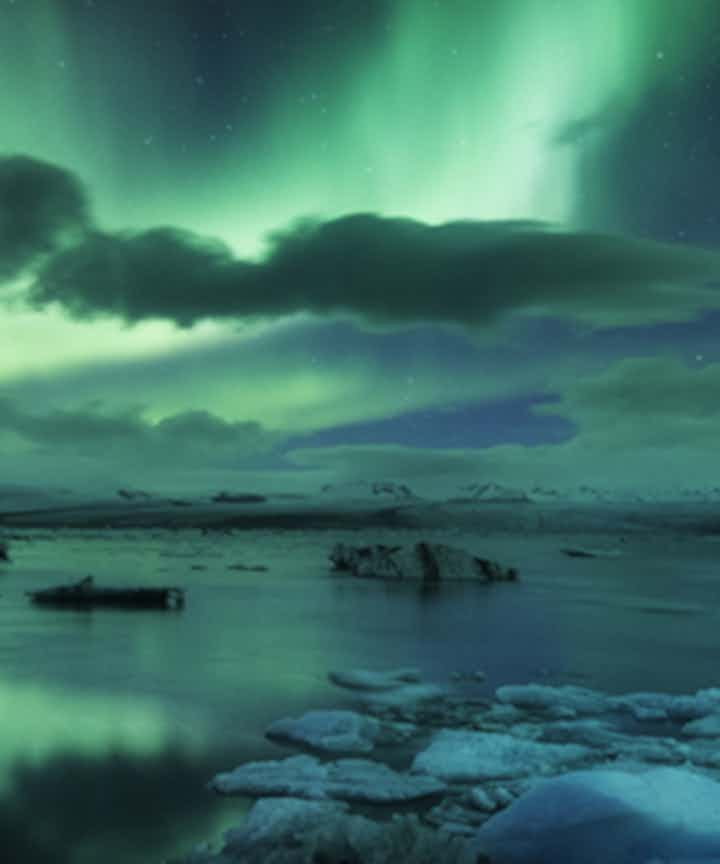
Best Northern Lights Tours in Iceland
Select starting location
Select dates
Add travelers
Northern Lights Tours & Holidays
Refine the results by using the filters
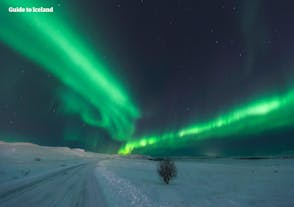
8-Day Northern Lights Winter Self-Drive Tour of West and South Iceland with Ice Caving
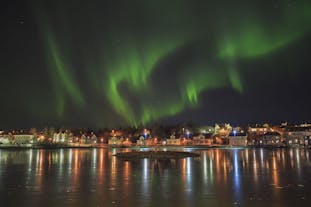
Affordable 3 Hour Northern Lights Bus Tour with Transfer from Reykjavík

Northern Lights Super Jeep Tour with a Photographer Guide & Transfer from Reykjavik

Amazing 2 Hour Northern Lights Cruise with Transfer from Reykjavik Harbor
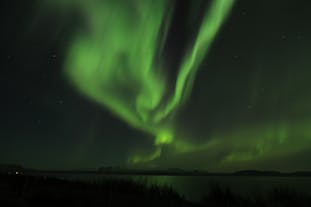
Northern Lights Bus Tour with Transfer from Reykjavik
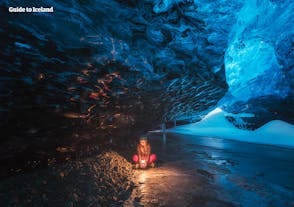
Amazing 5-Day Northern Lights Winter Vacation Package in Iceland with Ice Caving & the Blue Lagoon

Magical 2 Hour Northern Lights Boat Cruise with Transfer from Reykjavik
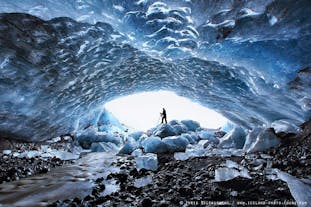
3-Day Northern Lights Tour of Iceland’s Golden Circle & South Coast with Ice Caving & Glacier Hiking
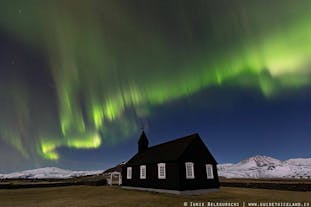
Best 7-Day Northern Lights Self Drive Tour Through South Iceland to Jokulsarlon Ice Cave
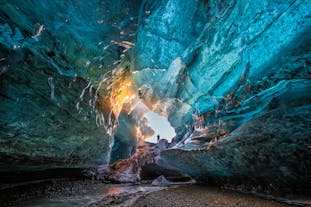
2 Day Ice Cave Tour with South Coast Waterfalls & Jokulsarlon Glacier Lagoon
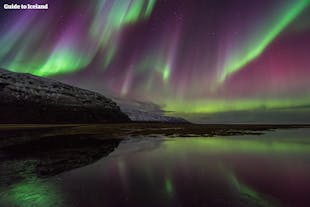
Breathtaking 6-Day Northern Lights Hunting Package of Iceland with Ice Caving
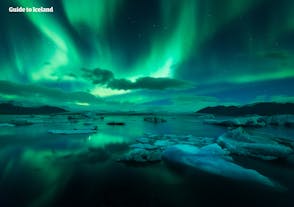
8-Day Guided Northern Lights Winter Tour of the Complete Ring Road of Iceland
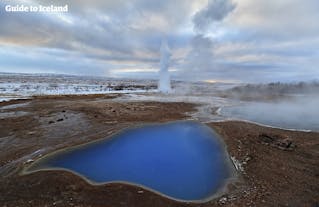
Northern Lights & Golden Circle Tour with Audio Guide & Transfer from Reykjavik
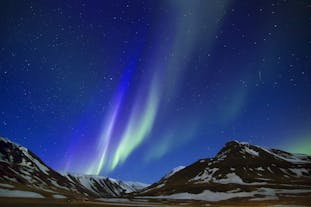
Magical 3 Hour Northern Lights Tour with an Audio Guide in 10 Languages & Transfer from Reykjavik
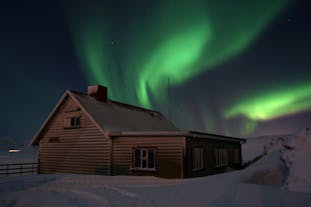
Northern Lights Mystery
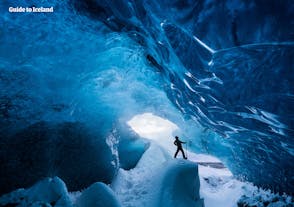
Small Group 6-Day Northern Lights Winter Tour of the Complete Ring Road of Iceland
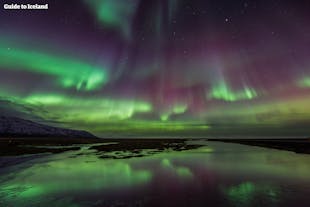
7-Day Northern Lights Winter Vacation Package with Ice Caving

Northern Lights Tour With Photographer
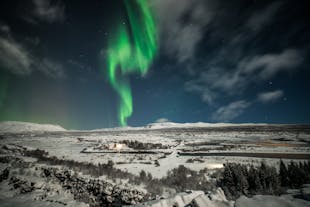
Magical 4-Hour Aurora Museum and Northern Lights Minibus Tour from Reykjavik
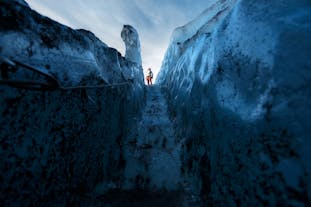
2 Day Northern Lights & Ice Cave Tour with Glacier Hiking & Jokulsarlon Glacier Lagoon
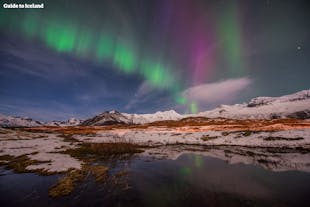
Small Group 4-Day Northern Lights Winter Vacation Package with Golden Circle & South Coast
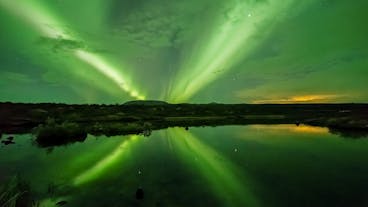
Serene 2-3 Hour Northern Lights Boat Tour from Reykjavik

2 in 1 Bundle Discount Tours | All National Parks & Ice Caving
2-Day West Coast & Snaefellsnes Peninsula with Lava Caving & Northern Lights Tour
Explore an unequalled wealth of tours and packages
Vacation Packages in Iceland
Self drive tours in iceland, tour calendar, nature tours in iceland, adventure tours in iceland, cheap bus tours in iceland, top tour destinations in iceland, verified customer reviews.
Read first-hand reviews by customers from across the world

Wonderful Aurora Hunting Tour Experience! Although the aurora was not very visible, it still made for a fantastic memory. The tour was initially set for three hours, but due to poor visibility that evening, the team didn't give up. They continued to search for the northern lights and managed to capture some faint camera lights after 2 AM. Despite running overtime and it being very late, they provided ample opportunity for those still energized to get off the bus and try their luck at spotting and photographing the lights. It was the last day of the aurora season, and on the way back, the guide explained that this time didn’t count as a successful sighting and offered a chance to join another tour within the next two years. I’m truly grateful for the team's dedication and effort. Thank you for making it a memorable experience!

Pyeseghl Aurelio
Great Golden Circle tour with a knowledgeable tour guide. The Northern Lights tour guide was very enthusiastic about the phenomenon and you could tell from the way he talked about it. Unfortunately, we only saw a small trail during our time there, which lasted roughly 4 hours. The lead guide was trying to see if we could chase another sighting on the way back to Reykjavik but we ended up heading straight back. The effort that the guides took into to ensure possible sightings was admirable and definitely a stark change from another tour that we went on the previous night. Whilst the offer of rebooking the tour was there, unfortunately we were leaving the next day so were unable to try again during the trip. However, the enthusiasm the guides experienced and the fact that they did try to go to another site to ensure a sighting is why next time I shall book with the same company (Grey Line Iceland) .

Phoebe Cheuk
The guide Romeo was friendly. He prepared hot chocolate and fire in cold weather. The places he chosen for seeing the northern lights are perfect. It is important to wear warm clothes and gloves because your feet and hands will be freezing outdoors at cold night !

Morgan W Hizer
Where to begin! This was absolutely the best trip of my life. I’ve been planning this trip since September of 2023. Guide to Iceland had so much helpful information about the country that assisted in knowing what to expect. If I had any questions they were quick in responding. I did encounter a couple hiccups which I feel was partially out of their control, however they were quick in fixing the situation. I unfortunately didn’t get to see the Northern Lights, nor was I able to do one thing on my journey the way they planned it and it being closed on the day they planned it on the itinerary. Just gives me a reason to come back, so I made peace with it. I’d recommend this and using them to assist in making your dream a reality.
What are the Northern Lights?
The northern lights, otherwise known as the Aurora Borealis, are phenomena that occur at high latitudes when solar particles ionise as they enter the earth's atmosphere, appearing in the night sky in the form of waving ribbons of colour. These ‘ribbons’ have captivated their viewers for centuries, bringing about defying awe and unspeakable mystery.
The northern lights are, in fact, occurring throughout the year, yet it is only during the dark winter nights that they become visible to the human eye. This is, naturally, what makes northern light hunting one of the most popular winter activities in Iceland. You can partake in numerous tours that take you to the best northern lights spotting locations, such as an affordable Northern Lights Bus Tour that takes you far away from the city's light-pollution, or a Northern Lights Boat Cruise that allows you to witness the auroras out on the open sea. Outside of Scandinavia, it is only possible to go northern light hunting in such places as Alaska, northern Canada and Siberia.
Modern scientific understanding of the northern lights did not mature until the 1880's when researchers discovered their connection to solar activity. Further study, seventy years later, would deepen this revelation, with new breakthroughs made in the knowledge that electrons and protons travel to earth on a ‘solar wind’. Today, research is ongoing into the northern lights as we further our understanding of deep space and our connection to it.
The northern lights have long been known to the Scandinavian people, inspiring some of the greatest and longstanding tales to have ever come out of Norse Mythology.
One of the most prominent of these relates to Ragnarök, a great future battle that, as foretold, will see the world submerged in water, and a significant number of the Gods dead, including the likes of Odin, Thor and Loki. After the events of Ragnarök, it is said that the world will be born anew, strengthening the ancient themes of birth, death and rebirth.
To prepare for this battle, Odin, the Chieftain of Asgard, would summon his most prized warriors, the Valkyries, female battle-maidens who rode on horseback carrying spears and shields. Ancient stories would surmise that the northern lights were a reflection of this Valkyrian armour.
Another widely spoken about interpretation is that the aurora was the ‘Bifrost Bridge’, a rainbow walkway that led deceased warriors into the glorious, glowing halls of Valhalla.
To the Icelandic Vikings, the aurora was a phenomenon to be celebrated, a popular trend that has continued to this day with countless Northern Lights tours taking place across the land of Ice and Fire. Neighbouring Scandinavians, however, were less than trustful.
Many Norse people, such as the indigenous Finno-Ugric people, the Sámi, felt that the lights were to be feared. Believing these dancing green, red and yellow light waves to be the souls of the dead, the Sámi were careful to never show any sign of disrespect towards the lights, be that whistling beneath them, singing, talking or even waving them to them.
It is said, that those who fail to heed these warnings will be pulled up into the sky, forever trapped among these nocturnal spirits. Due to this slumbering myth, it is thought that some Sámi people, even today, will not go outside when the northern lights dance above.
It is perhaps the Finnish who have the most beautiful allegory for the auroras, believing them to be created by the arctic fox, an animal that just so happens to be Iceland’s only native mammal. The Finnish name for the aurora translates to “Fire Fox”, a direct reference to the ethereal fox that would dash so quickly across the night sky that his tail would brush against the mountains, thus causing a vast and colourful outburst of sparks.
Still, another interpretation of the Arctic fox story differs somewhat, and provides some justification on the part of an ancient people as to why the lights only appeared in winter; instead of sparks, the fox’ tail was thought to have kicked up snowflakes into the air which then caught the light of the moon.
When it comes down to the folklore of Iceland particularly, it was believed that the northern lights helped to soothe the pain of childbirth, though women who had yet to give birth were warned not to look at them directly, in fear that the child would be born cross-eyed.
During your visit in Iceland, you have the option of seeing the northern lights on your own. But should you want to view them from the best spots, far away from the light-pollution of human settlements, you would be well advised to take a northern lights tour, in which a knowledgeable guide tells you all there is to know about this fantastic phenomenon.
Frequently asked questions
When is the best time to see the northern lights in iceland, why are the northern lights so common in iceland, can i see the northern lights in the summer in iceland, are northern lights tours in iceland worth it, is a sighting of the northern lights in iceland guaranteed on the tours, what region in iceland is best for spotting the northern lights, what's the best northern lights tour in iceland, what's the cheapest northern lights tour in iceland, how much is a tour to see the northern lights in iceland, what happens if a northern lights tour in iceland is canceled, how long does a northern lights tour in iceland last, is the northern lights tour going to be on a big bus or a minibus in iceland, do you offer a northern lights tour from reykjavik, iceland, do you offer northern lights photography tours in iceland, what colors are the northern lights in iceland, what kind of camera do i need to capture the northern lights, what are the best dslr camera settings for capturing the northern lights in iceland, what causes the northern lights in iceland, what should i wear on a northern lights tour in iceland, what are the ideal conditions to see the northern lights in iceland, do the northern lights happen every night in iceland, can you see the northern lights in reykjavik, iceland, what time of day is best to see the northern lights in iceland, can you see the northern lights from the blue lagoon, how long do the northern lights in iceland last, how long do northern lights tours in iceland last, can i see the northern lights on my own in iceland.

Download Iceland’s biggest travel marketplace to your phone to manage your entire trip in one place
Scan this QR code with your phone camera and press the link that appears to add Iceland’s biggest travel marketplace into your pocket. Enter your phone number or email address to receive an SMS or email with the download link.
Top things to do in Iceland
Book your complete trip with the best companies only

Visit a Live Volcano

Visit the Blue Lagoon

Go on a Road Trip

Do the Golden Circle

See the Glacier Lagoon

South Coast Tours

Find the Northern Lights

Explore an Ice Cave
Where and when to see the northern lights in 2024
Now is the perfect time to plan a northern lights trip

- North America
- Viewing from home
When to see the northern lights
Northern lights forecasts.
Nothing quite beats seeing the northern lights, or aurora borealis, in all their glory. But where and when can you see them?
Lucky for us the next few years are going to be the best for seeing the northern lights due to heightened solar activity as we approach "solar maximum" in the current solar cycle.
So if you are planning a trip to see the northern lights now is the time to do it. Not sure where to go? Here we have rounded up some of the best places to see auroras around the world.
Related: Aurora colors: What causes them and why do they vary?
The northern lights are created when energized particles from the sun slam into Earth's upper atmosphere at speeds of up to 45 million mph (72 million kph), but our planet's magnetic field protects us from energetic assault.
As Earth's magnetic field redirects the particles toward the poles the dramatic process transforms into a cinematic atmospheric phenomenon that dazzles and fascinates scientists and skywatchers alike. The southern lights, or aurora australis, are produced in the same way.
We asked Tom Kerss, astronomy, author and northern lights expert what three pieces of advice he would give to someone wanting to see the northern lights.
Tom Kerss is an astronomer and the author of numerous best-selling books about the night sky for both adults and children, including Northern Lights , Diamonds Everywhere and the Starry Stories Series .
What are your top tips for seeing the northern lights?
1. Unless you're lucky enough to have the lights come to you, seeing auroras is a matter of being in the right place at the right time. Fortunately, we can forecast where and when they are likely to become visible, so you can increase your odds. Being in Norway between late September and mid-March, during the darkest, moonless nights, and being mobile will greatly improve your chances.
2. It's important to persevere! The arctic nights can be extremely cold, but you'll need to push yourself and stay up late to make the most of the auroral zone. On good nights, the Lights are visible as soon as it gets dark, but you should try to stay up until after midnight.
3. Taking your own photographs of the Northern Lights is so alluring, and very rewarding. Today's cameras — including smartphones — capture super, colourful and clear shots. But try not to get too carried away. Make sure you absorb the luminosity, colour and subtle movement of the Lights with your own eyes. You'll make pictures in your mind that you can't share, but you can feel!
What is your favorite aurora fact?
My favorite fact about auroras is that they appear not only on Earth, but on many other worlds. Every planet in the Solar System (except Mercury) exhibits auroras, as do several moons and even a comet! Moreover, we've measured auroras on other stars, and possibly even exoplanets, and they can teach us about the environments and interiors of these remote worlds.
Where to see the northern lights in Europe
If you live in Europe, the easiest thing to do is head to the far northern parts of Norway, Sweden, Iceland and Finland. Many local people speak English in those regions and there are lots of tours available.
Wherever you plan on going, bear in mind that cloudy skies may make it difficult to catch auroras on any one particular night. If possible, leave yourself extra time to accommodate inclement weather.
Here is a list of some possible European northern lights trips and tour providers:
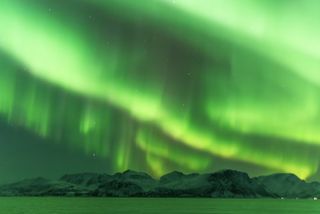
Hurtigruten Coastal Express
Bergen — Kirkenes — Bergen
Price: From £2942pp, includes breakfast, lunch and dinner + exclusive excursion to the Tromsø planetarium.
Duration: 12 days
Northern Lights Promise : If there is no recorded sighting of the northern lights while sailing, Hurtigruten will give guests a free 6- or 7-day Classic Voyage to redeem the following season. Terms and Conditions apply.
If you're interested in booking the Astronomy Voyage head over to Hurtigruten's official site .
If you're looking for the ultimate skywatching and cultural experience in Norway, we recommend taking the Hurtigruten Coastal Express along the stunning Norwegian Coast.
There are a number of voyages available as well as specialized " Astronomy Voyages " that include additional astronomy lectures from an onboard astronomer and a visit to Tromsø's impressive planetarium and science center.
You can read more about what it's like to experience the Hurtigruten Astronomy Voyage in our article .
The Northern Lights Company
The Northern Lights Company based in stunning Vesterålen, Norway, offers various 4, 5 or 7-night northern lights trips between September and April.
All tours include transport, accommodation, aurora chasing by night as well as daytime activities so guests not only get to see beautiful Norway but also experience it.
From eagle safaris and visits to the local Sami Reindeer farm to aurora research at the Andøy Space Centre and photography trips. There is something for everyone with the Northern Lights Company.
Visit Tromsø
Visit Tromsø sells aurora-watching trips around the city of Tromsø in Norway. The largest urban area in Northern Norway and the world's third largest city above the Arctic Circle, Tromsø lies just within the Northern Lights Oval, the region above Earth's geomagnetic North Pole where aurora displays are most likely to occur.
Visit Tromsø sells 'aurora chases,' dynamic night hunts for aurora displays in the aurora season between September and April, and slower-paced 'experiences' such as dog-sled and boat trips and overnight stays at aurora hotspots. Tromsø can be accessed by plane from Norway's capital Oslo; adventure seekers are sometimes rewarded by an aurora display during their incoming flight.
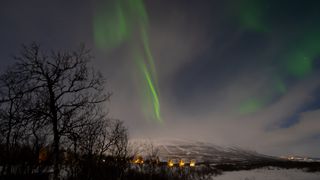
Lights over Lapland
Lights over Lapland sells a range of aurora-watching packages that take skywatchers to Sweden's northernmost region, Lapland. Lapland straddles the border between Sweden and Finland, with both sides offering excellent aurora viewing opportunities in winter months and the midnight sun experience in summer.
Lights over Lapland operates on the Swedish side of the border with most of its tours aiming for Abisko National Park (not far from the Esrange Space Center which runs rocket tests for ESA and is gearing up to perform the first satellite launches from continental Europe).
"Abisko has developed a reputation for being the No. 1 aurora-watching destination on the planet, due to the fact that it is located in a very special microclimate with less precipitation than any other location on Earth that is located within the aurora zone," photographer Chad Blakley, who is a co-founder of Lights over Lapland, told Space.com via email.
If you want to see what it's like to chase auroras in Swedish Lapland check out our article on what it's like to put Abisko's "cloud-busting weapon" to the test .

Guide to Iceland
Guide to Iceland sells a range of aurora-watching packages on the North Atlantic island, including bus tours, boat tours and hunting trips. Situated just below the Arctic Circle, Iceland provides a decent chance of catching the Northern Lights during winter months. If that doesn't work out, you can instead relax in the island's powerful natural hot springs and outdoor pools.
Viatour northern lights night tour from Reykjavik
Viatour operates evening aurora-watching trips from Iceland's capital Reykjavik. The bus tour takes tourists across the island to its most popular aurora spots. The operator says that those who don't get to see the northern lights during their trip can join again at no additional cost.
Arctic Adventures
Arctic Adventures offers a large number of tours from day trips to multi-day excursions to experience the very best of Iceland. There is a range of northern lights tours available whether it be traveling by bus, boat, or multi-day hiking tours. Experience the majestic northern lights with Arctic Adventures and make memories that will last a lifetime.
Where to see the northern lights in North America
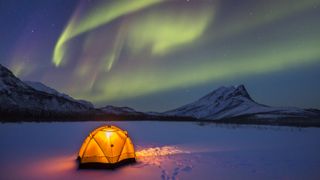
If you're interested in trying to photograph the northern lights check out our guides on how to photograph auroras , as well as the best equipment for aurora photography .
There are plenty of options for good aurora viewing in North America. While far-eastern Canada tends to be cloudy, the shore of the Hudson Bay, the northern Canadian towns of Yellowknife or Whitehorse, or the west coast of Alaska are usually good bets. (The city of Fairbanks itself can be a great choice for seeing northern lights without needing to go too far in the wilderness.)
Alaska Tours
Alaska Tours offers a range of packages from one-day trips to week-long tours that take visitors past the Arctic Circle to the heart of Alaska's wilderness, where the chance of catching the glowing auroras is among the best in the world.
Aurora Borealis Yukon
Aurora Borealis Yokon runs one-day to five-day aurora-watching trips in the Yukon territory in northwestern Canada. A direct neighbor of Alaska, Yukon offers pretty much the same aurora-observing conditions during the winter months.
Churchill Arctic Adventures
In the east, Churchill Arctic Adventures offers trips to Churchill, Manitoba, on the western shores of Hudson Bay. The company operates dedicated 'aurora domes,' heated cabins and other outposts in the boreal forest that allow visitors to observe the magnificent lights in perfect comfort. If the aurora doesn't show up, then perhaps some of the polar bears residing in this region may.
Can I see the northern lights from my home?
If you capture an amazing photo of the northern lights and would like to share it with Space.com and our news partners for a story or gallery, send images to [email protected].
The "standard" aurora borealis, observable in the Arctic regions, is generated by the solar wind , which constantly flows toward Earth. It manifests itself into a large "ring" above Earth's geomagnetic North Pole and is known as the aurora oval.
During times of heightened solar activity, the aurora oval can expand more southern latitudes. The National Oceanic and Atmospheric Administration (NOAA) Space Weather Prediction Center maintains a detailed 30-minute aurora forecast where you can see the predicted extent of the auroral oval and the probability of auroras. The aurora borealis is visible most nights, weather permitting, within a band several hundred miles wide that's centered at about 66 degrees north — about the same latitude as the Arctic Circle.
But geomagnetic storms, caused by coronal mass ejections (CME), can ramp up the northern lights considerably and make them visible over much wider areas. In early November 2023, for example, a powerful geomagnetic storm sparked auroras as far south as Greece and Turkey .
Related: Aurora myths, legends and misconceptions
As the solar cycle intensifies, such occurrences might become more common (or rather, slightly less rare). We recommend keeping an eye on Spaceweather.com for alerts of possible incoming geomagnetic storms as well as NOAA's Space Weather Prediction Center .
Yet even the most powerful geomagnetic storm will fail to deliver the experience unless other factors cooperate — a cloud-free sky, not too much moonlight, nighttime hours and absence of light pollution. (City-dwellers have to get out into the countryside for an aurora experience no matter how strong the geomagnetic storm supercharging the sky might be.)
But you can have an aurora experience without even leaving your house if you so choose. Our northern lights webcams article offers aurora views from some iconic locations from across Europe and North America, all in one place.
If you're planning an aurora-viewing trip, the best time is throughout the winter months. Anytime between late September to late March is a good time for northern lights hunting as the long nights provide ample aurora viewing opportunities.
The good news is that the sun's approximately 11-year solar cycle of solar activity is ramping up as we approach solar maximum. This means that the next few years will be the perfect time to plan a northern lights adventure.
The northern lights can appear for long periods or short bursts lasting only a few minutes (if that!) so the best way to see them is to wrap up warm, and wait. I have been on several northern lights hunts and sometimes they can appear when you least expect, so unless you're already outside and ready, you'll miss them completely. For me, the wait is all part of the experience, especially when you're out aurora hunting with other like-minded individuals. It provides the perfect opportunity to share aurora stories, do a spot of stargazing and simply enjoy the shared experience of the night sky .
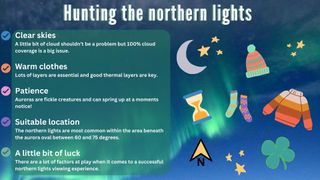
You can get an idea of how active the northern lights are likely to be in your area by keeping tabs on a short-term aurora forecast, such as the one provided by the Geophysical Institute . One predicting the next half hour is available on NOAA's Space Weather Prediction Website . Also, a citizen science website called Aurorasaurus gives on-the-ground instant information from aurora enthusiasts wanting to alert the community to new sky shows.
Join our Space Forums to keep talking space on the latest missions, night sky and more! And if you have a news tip, correction or comment, let us know at: [email protected].
Get the Space.com Newsletter
Breaking space news, the latest updates on rocket launches, skywatching events and more!
Daisy Dobrijevic joined Space.com in February 2022 having previously worked for our sister publication All About Space magazine as a staff writer. Before joining us, Daisy completed an editorial internship with the BBC Sky at Night Magazine and worked at the National Space Centre in Leicester, U.K., where she enjoyed communicating space science to the public. In 2021, Daisy completed a PhD in plant physiology and also holds a Master's in Environmental Science, she is currently based in Nottingham, U.K. Daisy is passionate about all things space, with a penchant for solar activity and space weather. She has a strong interest in astrotourism and loves nothing more than a good northern lights chase!
- Elizabeth Howell Staff Writer, Spaceflight
- Mike Wall Senior Space Writer
The Unistellar eVscope 2 is $1160 off ahead of Prime Day
Save $400 on Unistellar smart binoculars: Early bird deal
Who is Dr. Kovich in 'Star Trek: Discovery'? The mystery explained
Most Popular
- 2 Where is the center of the universe?
- 3 Could nearby stars have habitable exoplanets? NASA's Chandra X-ray Observatory hopes to find out
- 4 This Week In Space podcast: Episode 115 — Our Friendly Mr. Sun
- 5 Space weather forecasting needs an upgrade to protect future Artemis astronauts
- Search Please fill out this field.
- Manage Your Subscription
- Give a Gift Subscription
- Newsletters
- Sweepstakes
7 of the Best Northern Lights Cruises
Set sail on these itineraries to try to spot the aurora borealis.
:max_bytes(150000):strip_icc():format(webp)/Stefanie-Waldek-7eed18a8c9734cb28c5d887eb583f816.jpg)
If seeing the northern lights , also known as the aurora borealis, is on your travel list, you've probably already looked into the best places to see them : northern destinations like Alaska, Canada, Greenland, Iceland , and Scandinavia among them. But have you ever considered visiting those destinations by sea rather than land? Many cruise lines not only offer itineraries to those regions but also offer northern lights-specific sailings, too. Cruising is particularly appealing for northern lights seekers because the ships can access remote areas without light pollution, allowing guests to see the aurora in its full brilliance. So if you haven't yet seen the northern lights — or if you're looking to see them again — here are seven northern lights cruises to help you accomplish your goal.
Viking: In Search of the Northern Lights
RelaxFoto.de/Getty Images
Over the course of 13 days, a luxurious Viking ocean ship transports guests from London to Amsterdam , then all the way up the coast of Norway and north of the Arctic Circle, before returning back south to the Norwegian city of Bergen. (Although some sailings operate in reverse.) The Norwegian fjords themselves are a sight to behold — and if they're paired with the northern lights, that's all the better! The sailings run from January to March when daylight is limited in the Arctic Circle, making for prime aurora opportunities. Rates start from $4,999 per person in 2023, and it should be noted that Viking is an adults-only cruise line.
Aurora Expeditions: Northern Lights Explorer
Considering the cruise line is named after the atmospheric phenomenon, it should come as no surprise that it offers a northern lights itinerary. At 19 to 22 days long, depending on the departure, there is plenty of time to hope for a northern lights appearance — or two, or three, or more. The sailings start in the northern Norwegian city of Kirkenes before sailing south along the coast, heading back north to the remote archipelago of Jan Mayen (a polar bear hotspot), over to the scenic fjords of East Greenland, and around the northern half of Iceland. The longer itinerary continues with a visit to the Faroe Islands and disembarkation in Bergen, Norway. Aurora offers just one of these sailings per year in September. Rates start from $19,705.50 per person in 2023.
Hurtigruten: The Classic Roundtrip Voyage
Hurtigruten is something of an outlier in this group because it doesn't offer specific northern lights itineraries. But the routes of this coastal ferry company in Norway just happen to traverse the perfect latitudes to see the aurora. In fact, Hurtigruten is so confident you'll see the northern lights during the auroral season (Sept. 26 through March 31) that if they don't show up on a sailing of 11 days or more, the company will give you a free six- or seven-day cruise to try again. For the best odds of seeing the northern lights, we suggest the 12-day round-trip itinerary from Bergen up the coast of Norway and back. Rates start from $2,309 per person in 2023.
Quark Expeditions: Under the Northern Lights
Specializing in polar voyages, Quark Expeditions knows a thing or two about the northern lights, which is why the company offers aurora sailings each fall. These 14-day itineraries cruise from Iceland to Greenland and back from September into early October. As the majority of the voyage takes place above the Arctic Circle, the odds of seeing the northern lights are high, especially as solar activity tends to peak around the autumnal and vernal equinoxes in September and March, respectively. And if they don't show, well, you still get to explore Iceland's Westfjords and Greenland's eastern shores — and that's a worthwhile journey in itself. Rates start from $8,501 per person in 2023.
Oceanwide Expeditions: East Greenland Scoresby Sund - Aurora Borealis
If you don't have two or three weeks to take off work to go northern lights watching, consider Oceanwide Expeditions' eight-day aurora borealis sailings from Iceland to Greenland and back. The adventure begins in Akureyri, the unofficial capital of north Iceland, before heading for Greenland's breathtaking Scoresby Sund, the largest fjord system in the world. If you do have a little more time, you can opt for the 13-day Spitsbergen - Northeast Greenland - Aurora Borealis itinerary, which embarks in the Svalbard archipelago before sailing to Greenland and down to Iceland. Both take place in the late summer into early fall, as darkness returns to the skies in the Arctic. Rates for the eight-day itinerary start from $4,600 per person for the 2023 sailings.
Cunard: Norway and Northern Lights
Each fall, one or two of the ships in Cunard's legendary fleet head north for Norway, where guests are treated to scenic cruising along the coast. The 12-day itineraries depart from Southampton, England, before traveling to Alesund, Tromsø, Narvik, and Haugesund, sailing through majestic fjords along the way. Since the ships sail this itinerary from October to November, the skies will be dark enough to see the northern lights, should they decide to appear. In 2023, the voyage will be undertaken by Queen Victoria , while next season, the Queen Mary 2 and the upcoming Queen Anne will take the reins. Rates start from $1,689 per person in 2023.
P&O: Norway
The most affordable option on this list, British cruise line P&O operates 12-day sailings to Norway year-round, but during the auroral season, there's a strong chance you'll see the northern lights while onboard. Guests embark in Southampton, England, before sailing north to Norway, traveling as far north as Tromsø, well north of the Arctic Circle. We recommend splurging on a room with windows for the best northern lights viewing options. However, those in interior cabins can always run up on deck — which you should do anyway to witness the full grandeur of the atmospheric phenomenon. Rates start from $1,385 per person in 2023.
Related Articles
Here are the 10 best places to see the northern lights
Recently updated on July 19th, 2023 at 09:06 am
Ribbons of colour dash across the night’s sky. Rising, falling and flickering in an evermoving tapestry. Stillness engulfs you. Time evaporates.
Catching sight of the aurora borealis (often called ‘the northern lights’) – and time in the places they appear – is a spellbinding travel experience. So to savour every second, these are 10 best places to see the northern lights (plus the best season to travel).
What are the northern lights?
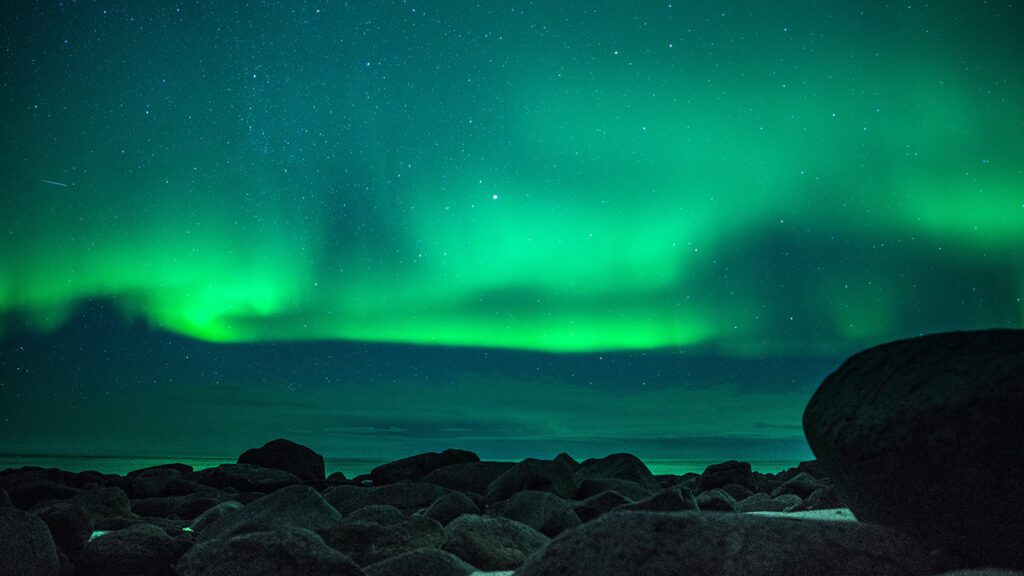
When solar wind from the sun collides with the earth’s magnetic field, it’s pulled towards the earth’s poles and released into the atmosphere. This reaction causes curtains of colour to appear in the dark sky – green, red, pink, violet, white, blue, or/and yellow.
Galileo Galilei coined the term ‘aurora borealis’ to describe this wonder by the north pole: combining words for the Roman goddess of dawn (Aurora) and the Greek god of the north wind (Boreas).
Today, adventurers venture to places of 60 to 75 degrees °N latitude and stay up till dawn on a clear night in anticipation.
Why is September the best month to see the northern lights?
The earth’s axis tilts more towards the sun’s solar wind around the autumn equinox (22 September), meaning there’s a higher chance of this geomagnetic reaction in the atmosphere.
Plus September’s cooler (rather than freezing) winter air and ice-free lakes and mountains make the following 10 places blissful retreats for northern lights watching.
10 best places to see the northern lights
Look closely, there are some surprises along the way.
Finland (Lapland)
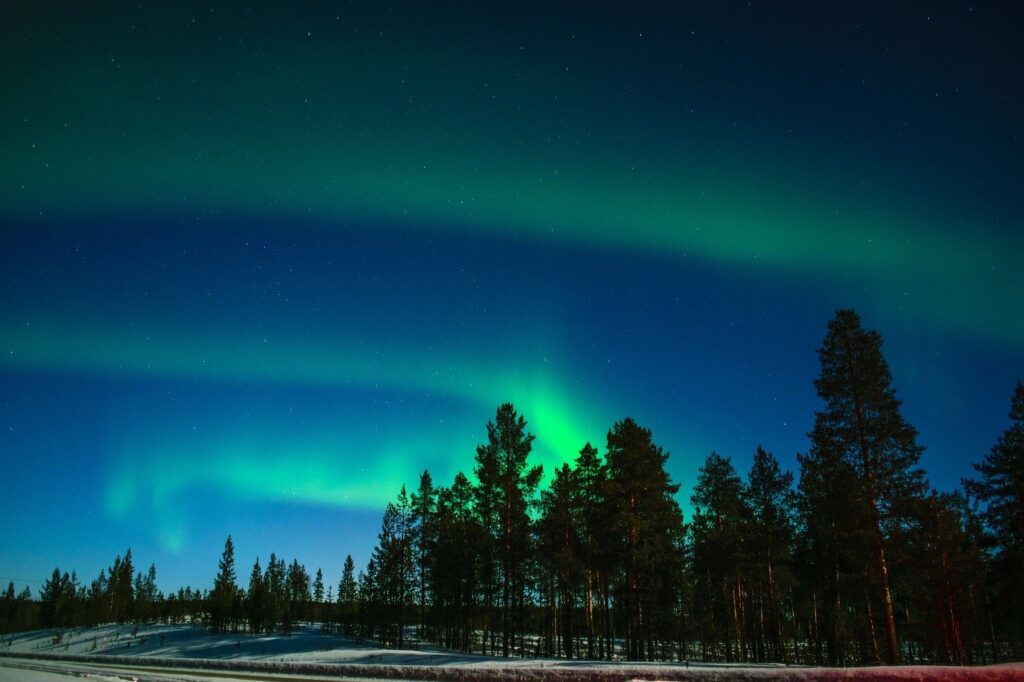
Head north to Finland’s enchanting Lapland for the highest chance of seeing the northern lights. Its 65-72°N latitude puts it in the ‘ northern lights belt ’ and causes these magical lights to appear around 200 nights per year.
Touching the artic circle, Rovaniemi (Lapland’s capital and official home of Santa Claus) presents a snowy paradise and otherworldly viewing spots in the form of glass roof cabins staring up at night. Likewise, a 3-hour drive north takes you to remote, forest-filled Saariselkä – where sightings are common.
GET INSPIRED BY: Scandinavian Northern Lights tour
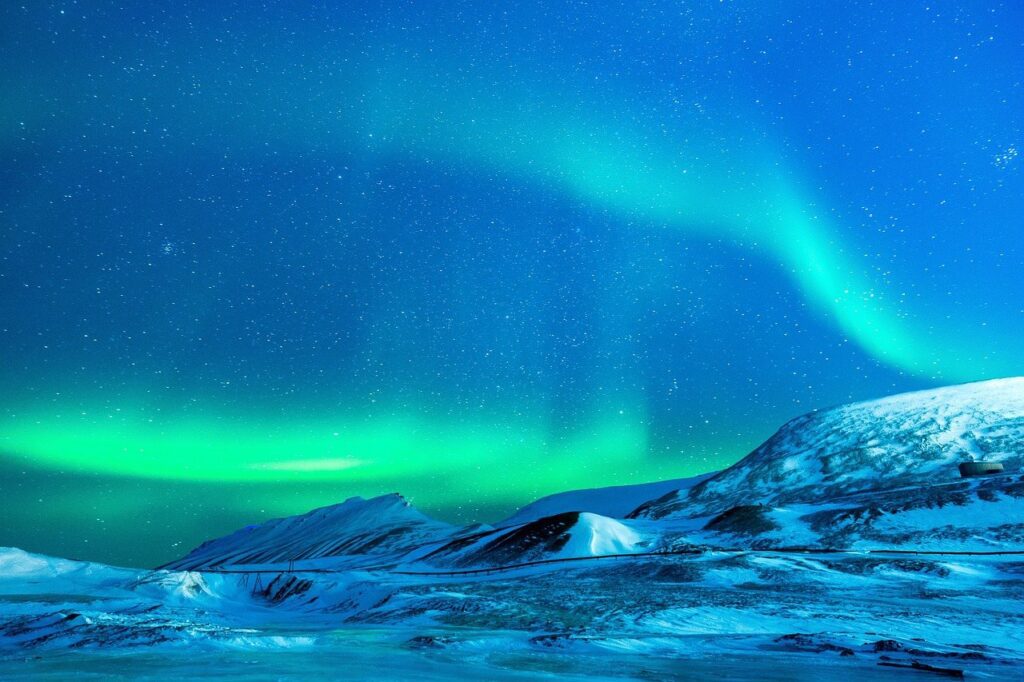
The ‘Land of Fire and Ice’ is also home to spectacular lights. Drift away from the artificial lights of its cool capital Reykjavik – 30 minutes by boat – to a blissful spot surrounded by mountains on Trafalgar’s Iceland tour . One of the world’s best places to see the northern lights. Elsewhere, Akureyri park (in the far north) and Vík (187km southeast of Reykjavik) are also spellbinding spots.
RELATED CONTENT: What to pack for a Northern Lights tour to Iceland
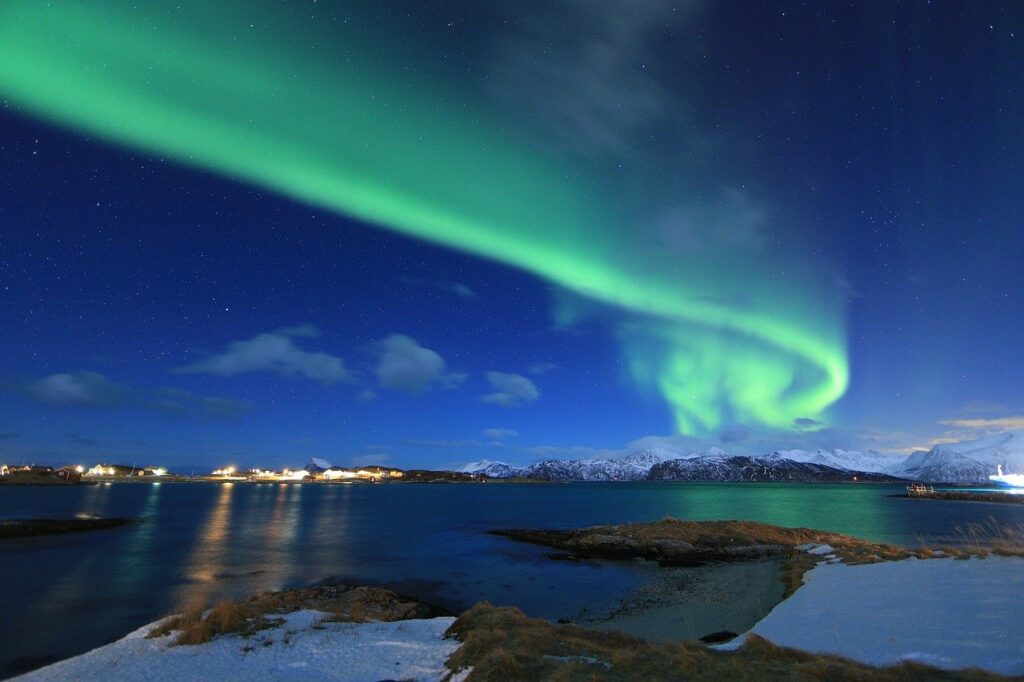
It’s only right that a country adorned in natural beauty is home to magical northern lights displays. We recommend heading to charming Tromsø (nicknamed the ‘capital of the Arctic’) to keep an eye out. As well as the lookout points at remote Alta in northern Norway – famed as ‘The Town of the Northern Lights’ among locals.
Sweden (Lapland)
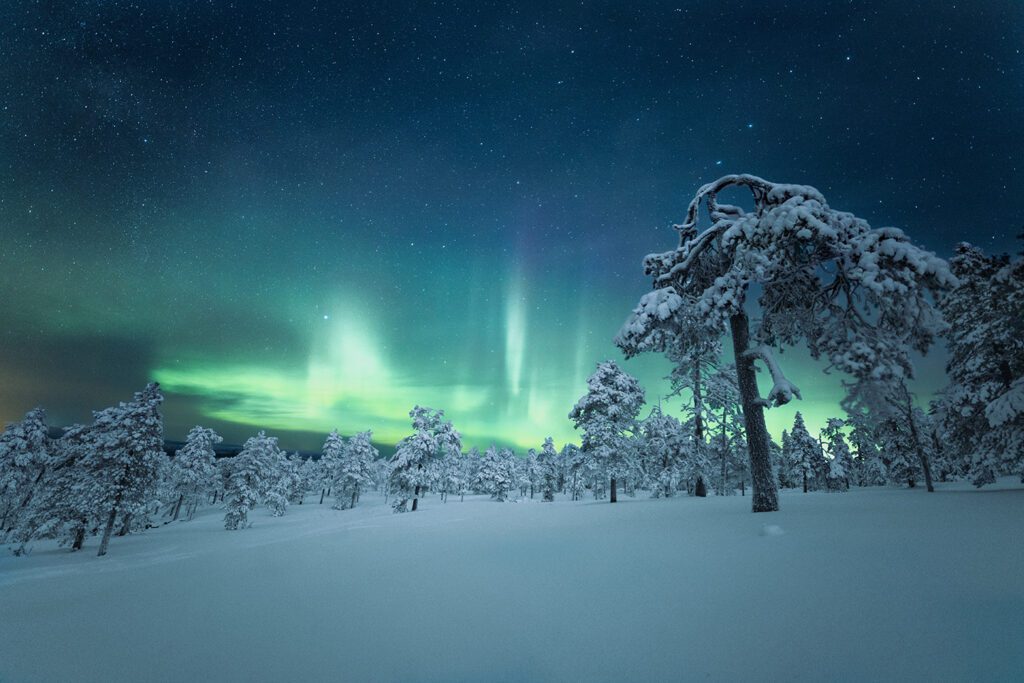
Swedish Lapland offers a mystical northern lights experience. Head to Abisko National Park – located in the ‘auroral oval’ (a highly active region centred on the earth’s magnetic pole where auroral emissions happen). What’s more, Abisko’s wonderfully low rainfall means the nights are clear and aurora borealis appearances for two weeks in a row aren’t uncommon.
Further afield, Kiruna (in the far north) feels like another world – especially while you eat dinner outside in eager anticipation of the lights on Trafalgar’s Scandinavia Northern Lights tour .
The United Kingdom
Dancing waves of colour have appeared in Scotland (the Isle of Skye), Ireland (Malin Head in Donegal’s Inishowen Peninsula) and England (Cornwall, the Lake District, Kent and Norfolk – the latter as recently as August 2022 ) due to the rare chance strong solar wind and perfect clear conditions. A clear example that aurora borealis is all about being in the right place, at the right time. So always keep your eyes peeled.
A country of clean air and gorgeous islands, Estonia’s stock is rising as a northern lights retreat. Venture to Lahemaa National Park on the north coast, as the peninsula’s here jut out into the Gulf of Finland and its clear skies. Plus Viimsi and Paljassaare, near Estonia’s capital Tallinn.
The United States
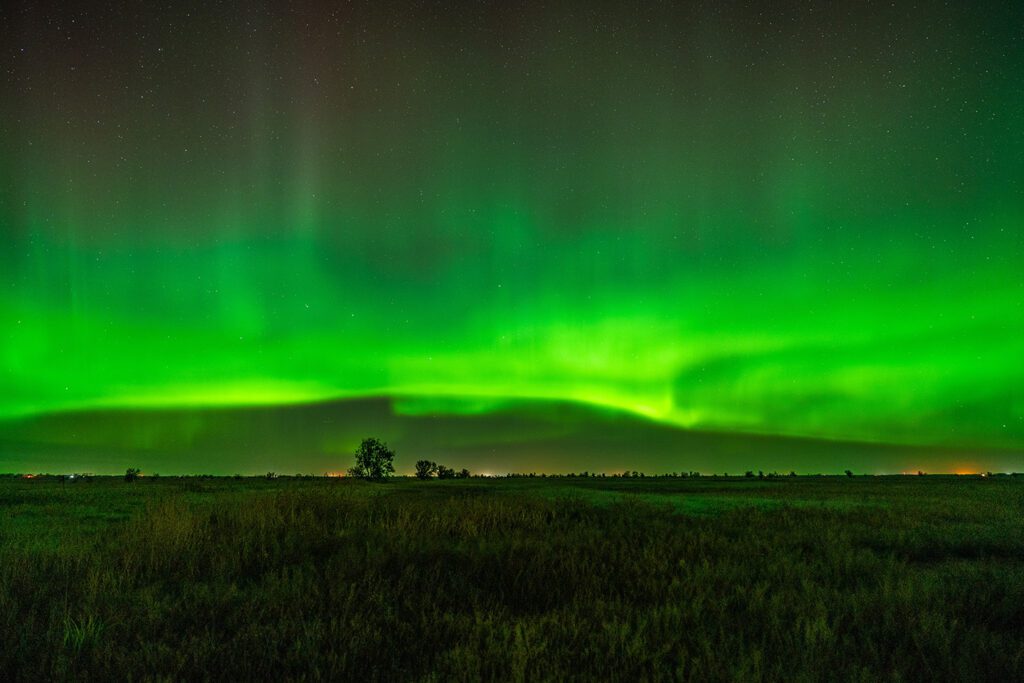
You read that right. Many of the world’s most colourful northern lights have been spotted in the United States. Top tip: head to Idaho Panhandle National Forest (80km south of the Canadian border) for stunning reflections off Priest Lake. Other options include Acadia National Park (Maine), Voyageurs National Park (Minnesota), Cherry Springs National Park (Pennsylvania) and North Dakota.
GET INSPIRED BY: US National Park Wonders tour

Take an enchanting trip to the US’ far northwest tip for ultra-clear sightings. Welcome to Alaska: where Fairbanks and Denali National Park offer two of the best places to see the northern lights. They are visible approximately 4 out of 5 nights in September.
GET INSPIRED BY: Majestic Alaska tour
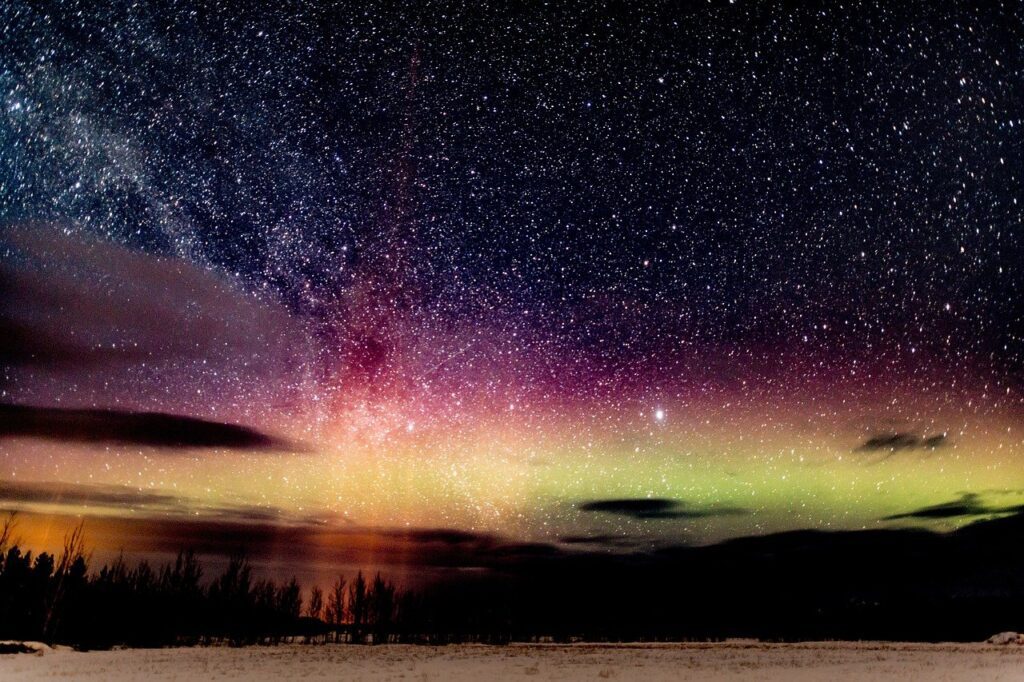
Canada is easily one of the best places to see the northern lights thanks to its northern latitude – with the highest solar activity found in September and October. We suggest picking a spot by Great Slave Lake in Yellowknife (northwest Canada), Jasper National Park (in Alberta), Wood Buffalo, Churchill and Yukon to soak it in.
RELATED CONTENT: 9 incredible natural wonders to witness with Trafalgar
We hope you enjoyed reading about the best places to see the northern lights. Where are you visiting first?
Want to hear more from us?
Sign up to receive inspiring travel articles, offers & news
" * " indicates required fields
Privacy Overview
Sign up for our emails (popup).
Aurora Tracks See Northern Lights

10 Awe-Inspiring Northern Lights CANADA Tours You Can Book Now

Planning an aurora-hunting trip to Canada in 2024-2025? Make your trip a success with one of these inspiring Northern Lights Canada tours, plus tips for what months, locations and tour features you should focus on to maximize your changes of seeing the lights.
Canada offers some of the most awe-inspiring northern light vacation tours available in the world. Thanks to its large landmass, situated well within the auroral oval, there are countless vantage points from which to view the elusive lights. Some of the best destinations within Canada include Yellowknife, Churchill, as well as Whitehorse.
In this article, we’ll help you select a northern lights tour in Canada for your needs and budget, with our tour recommendations and tips for what to look for in a well-organized aurora tour.
Considerations for Booking a Northern Lights Tour in Canada
Before you begin your Northern Lights tour in Canada, there are several factors that you must take into consideration when booking a tour package. It is important to remember that the wilderness in Canada is very expansive, and while there are countless destinations within the country to visit, only a few offer the best vantage points imaginable.
Book Early for Northern Lights Canada Tours
Always remember that when you are planning your Canada Northern Lights tour, you need to book well in advance. Most of these tours run during the peak viewing season, which spans from the end of August until the beginning of April. Although it is possible to view the aurora borealis later in the year, due to longer summer days, it can be much more difficult.
You also need to pay close attention to the destination, because locations like Whitehorse, Yellowknife, and Churchill often see the largest influx of tourists during the peak season. If you are planning to visit some of the top destinations within the country, then make sure that you book in advance to ensure that you have available accommodations and excursions.
Choose the Right Timing
Best months & season for northern lights.
The best time to view the northern lights is during the winter months, at the peak of the solar cycle. Since light pollution plays an important role in determining how well you can view the elusive lights, choosing to visit Canada during the winter months increases your odds of capturing a glimpse of the ghostly lights as they dance through the night sky.
During the peak winter months, there are only a few hours of sunlight, to obstruct the viewing experience, which is why they are the most popular months of the year to visit Canada.
While the Aurora tour season runs from Late August to Early April, for the best chances of seeing the northern lights in Canada, aim for Late September to Early March .
Best Years for Northern Lights (Solar Cycle Timing)
At the same time, choosing to hunt for the elusive lights when the sun cycle is at its peak, also increases your chances of capturing a glimpse of the auroras. The sun follows a natural 11-year cycle, and during the highest point of solar activity, the amount of solar radiation being ejected by the sun towards the earth is increased exponentially. The lights are a creation of the charged particles from the sun, passing over the earth’s magnetosphere. We have recently entered a solar cycle peak, so for 2024-2025, it’s accurate to say there is no better time than now for a northern lights Canada tour.
Check out our articles on choosing the best time to see Northern Lights in Canada and the best years for seeing Northern Lights for more timing tips.

Best Locations for Northern Lights Canada Tours
As always, the most important factor when it comes to viewing the northern lights in Canada is location, location, location. You want to make sure that you choose a destination that is well within the auroral oval. The closer you can get to the magnetic North Pole, the greater the chances of capturing a glimpse of the auroras. Making sure to select a destination that gives you an unobstructed view of the northern horizon, also improves your chances of viewing them.
Yellowknife, Northwest Territories
Many aurora hunters have dubbed Yellowknife as the Aurora Capital of America. Due to its location well within the auroral oval, and consistently clear skies, the chances of capturing a glimpse of the northern lights in Yellowknife is greatly improved. This is why countless tour operators offer annual getaways to locations in and around Yellowknife.
Churchill, Manitoba
You will find the city of Churchill located along the shores of Hudson Bay. Due to the wide-open expanses of the Bay, you are provided with a clear vantage point to the north. Not only will you be able to hunt for the northern lights in Churchill, but you may also encounter polar bears, beluga whales, and many other Arctic wildlife.
Whitehorse, Yukon
Another popular destination is located within the rugged Yukon wilderness. Whitehorse is known as the gateway to the Yukon, and offers aurora hunters the perfect staging point for an amazing experience. From Whitehorse, you will be able to head out into the Canadian wilderness by dogsled, or even go on a fishing expedition. There is so much to see and do when you visit Whitehorse in the Yukon.
Embrace the Unpredictability of Nature
Remember, the ability to view the northern lights is a purely subject to the unpredictability of nature. It is common for last-minute weather conditions to change, affecting your ability to view of the elusive lights. As a result, it is important to be as flexible as possible, and be prepared to make changes to your itinerary as the local weather forecast and aurora alerts change throughout the day. Set aside multiple nights specifically for aurora hunting, in order to maximize your chances of viewing the natural phenomenon.

10 Awe-Inspiring Northern Lights Canada Tours
Aurora borealis adventure from vancouver.
Operator: Landsby
Days: 3 nights
Tour Style: City Tour
Destination: Vancouver to Whitehorse
Tour Website: https://landsby.ca/tours/aurora-borealis-adventure-from-vancouver/
Enjoy an amazing aurora borealis adventure over 4 days and 3 nights as you venture out into the Yukon, hunting for the elusive lights. You will start your adventure in Vancouver, and make your way to Whitehorse before returning to Vancouver all with the help of an expert guide.
Inclusions & Highlights
- 3 Nights’ Accommodation
- Flight from Whitehorse
- Expert Tour Guide
- Transportation throughout the Day
Northern Lights and Gold Rush Glory
Days: 5 nights
From: $1153
Tour Style: Guided Tour
Destination: Whitehorse to Dawson City
Tour Website: https://landsby.ca/tours/northern-lights-and-gold-rush-glory/
Visit Whitehorse and see the northern lights like they were meant to be viewed. When you are in the Yukon, not only will you have countless opportunities to view the elusive lights, but you will also be able to experience life like it was back in the gold rush era, as you make your way to Dawson City.
- 5 Nights’ Accommodation
- Added Services
- Transportation to and from the Hotel
Yukon Ultimate Adventure Tour
Operator: West Trek Tours
Days: 2 nights
From: $1285
Tour Website: https://www.westtrek.com/tours/yukon-ultimate-adventure/
See all that the Yukon has to offer when you go hunting for the northern lights and Whitehorse. You will begin your journey and Vancouver, before making your way up to the Yukon to hunt for the elusive lights on this wonderful guided tour.
- 2 Nights’ Accommodation
Canadian Rockies & Northern Lights
Operator: Intrepid Travel
Days: 10 nights
From: $4450
Tour Style: Guided and City Tour
Destination: Edmonton to Calgary
Tour Website: https://www.intrepidtravel.com/en/canada/canadian-rockies-northern-lights-144879
If you are looking for an adventure, then make your way from Edmonton to Calgary on this 10-night adventure. While you are visiting the Canadian Rockies, you will have countless opportunities to view the elusive lights as you stop at 6 different destinations within the country along the way.
- 10 Nights’ Accommodation
- Meals Included
- Add-On Services
Arctic Tundra & Dawson City | Naturally Wild
Operator: Arctic Range Adventures
From: $2529
Tour Website: https://www.arcticrange.com/en/tour/arctic-tundra-dawson-city-naturally-wild.html
Start your adventure in Canada in Whitehorse, and then make your way to Dawson City where you will have 6 amazing days to view the Canadian countryside. As you enjoy your trip to the Yukon, you will be provided with ample opportunities to view the elusive lights as they dance through the night skies.
- In Country Flights
Yukon Winter Dream | Active Winter Adventure
Days: 4 nights
From: $1651
Tour Style: Cruise
Destination: Whitehorse
Tour Website: https://www.arcticrange.com/en/tour/yukon-winter-dream-active-winter-adventure.html
Head out into the Yukon, where you will have 5 days to travel through Whitehorse and view the amazing sites. Experience what it was like to live back in the gold rush days, as you make your way through the Canadian countryside, hunting for the aurora borealis.
- 4 Nights’ Accommodation
- Some Meals Included
- Transportation to and from Hotel
- Additional Services
Northern Lights Nights in Canada
Operator: LocalAdventures
From: $1405
Tour Website: https://localadventures.travel/tours/northern-lights-in-canada-1757638
Experience the northern lights like you’ve never done before, as you spend 5 days traveling through the Canadian Yukon. This once-in-a-lifetime experience includes accommodations as well as expert tour guides, amazing meals, and transportation everywhere.
- Scrumptious Meals
- Transportation
Aurora Hunting Tour
From: $1128
Destination: Yellowknife
Tour Website: https://localadventures.travel/tours/aurora-hunting-tour-9919171
Enjoy a once in a lifetime experience, as you hunt for the northern lights in Yellowknife. You’ll have plenty of things to see and do over your 5 day stay in Yellowknife, which will be supported by an expert guide, comfortable accommodations, and transportation to and from the hotel and the many excursions.
Northern Lights and Winter Nights
Operator: Frontiers North Adventure
Days: 7 nights
From: $5319
Destination: Winnipeg to Churchill
Tour Website: https://frontiersnorth.com/adventures/winter/northern-lights-and-winter-nights
If you are looking for the perfect adventure to take you out into the Alaskan wilderness to hunt for and photograph the elusive lights, then look no further. Throughout your 8-day stay in Canada, you will visit Winnipeg, Church Hill, and many other amazing destinations. Your travel will include flights, hotel, expert tour guide, meals and so much more.
- 7 Nights’ Accommodation
- Expert Tour Guides
- Some Transportation Offered
Rockies and Northern Lights Winter Wonderland
Operator: Travel Marvel
Days: 9 nights
From: $4398
Destination: Calgary to Vancouver
Tour Website: https://www.travelmarvel.com.au/trips/canada-alaska-usa/urwnl11/dec2024-mar2025
When it comes to a long adventure in the Canadian Rockies, look no further than this perfect 11-day vacation that starts in Calgary and takes you to four different destinations before reaching Vancouver.
- 9 Nights’ Accommodation
- Transportation to and from
This brings our article on northern lights Canada tours to a close. While a tour is not necessary for spotting the lights, there are many benefits to booking into a tour rather than going it alone. These reasons include a professionally organized tour route and timing with expert aurora borealis guides, who will do whatever they can to help you see the lights, as well as the obvious conveniences of having all your accommodation and meals laid out for you. For this service, they do come with a price tag.
If you’re looking for cheaper ways to see the aurora borealis, and you have a bit of a wild streak, an adventurous alternative is going on a northern lights camping adventure which we discuss in detail in that article, including specific camp spots to check out throughout North America. Another cheaper alternative is to book into a hotel in Canada renowned for its aurora borealis services plus a short one-night tour (or two) to take you out into the wilderness for some aurora-spotting.
For more tips on seeing the northern lights in Canada and planning an aurora-hunting trip, make sure to check out all our Northern Lights Canada articles here .
Happy aurora hunting!
Related posts:
- Where to See Northern Lights CANADA | Complete Guide
- Complete Guide to CANADA Northern Lights Hotel Stays
- What are the Best Northern Lights Vacation Packages ALASKA? (2024-2025)
- Top 10 Northern Lights Camp Spots in North America
Related Posts

What are the Best Countries to See Northern Lights?
Seeing the stunning Aurora Borealis is a once-in-a-lifetime dream for most travel enthusiasts. However, what are the best countries to see Northern Lights remains a…
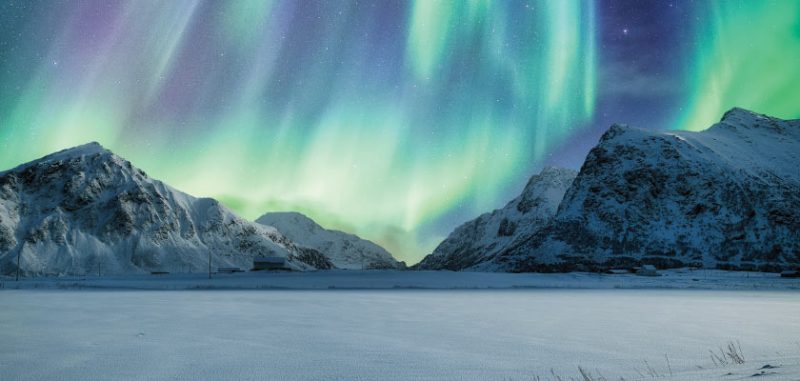
Best Time of the Year to See Northern Lights (Monthly Planner)
Trying to work out the best time of the year to see Northern Lights? In this month-by-month guide to the Aurora we share the best…

Best Place and Time to See Northern Lights 2020-2035
Want to know exactly where and when to see Northern Lights? Discover the best place and time to see Northern Lights across the globe, inc…

When to See Northern Lights in ALASKA | Monthly Planner
Wondering when to see Northern Lights in Alaska? In this guide, we explain best month to see Northern Lights in Alaska and best time of…
SUMMER GETAWAY IDEAS?
New! Find answers in a flash with Scout, our friendly AI chat otter.
BEST WEEK EVER
Try out unlimited access with 7 days of Outside+ for free.
Start Your Free Trial

A Guide to Northern-Lights Watching in the U.S.
Thanks to a peaking solar cycle, spectacular auroras will likely appear again in the lower 48 soon. Our expert’s advice will set you up for success to see them.
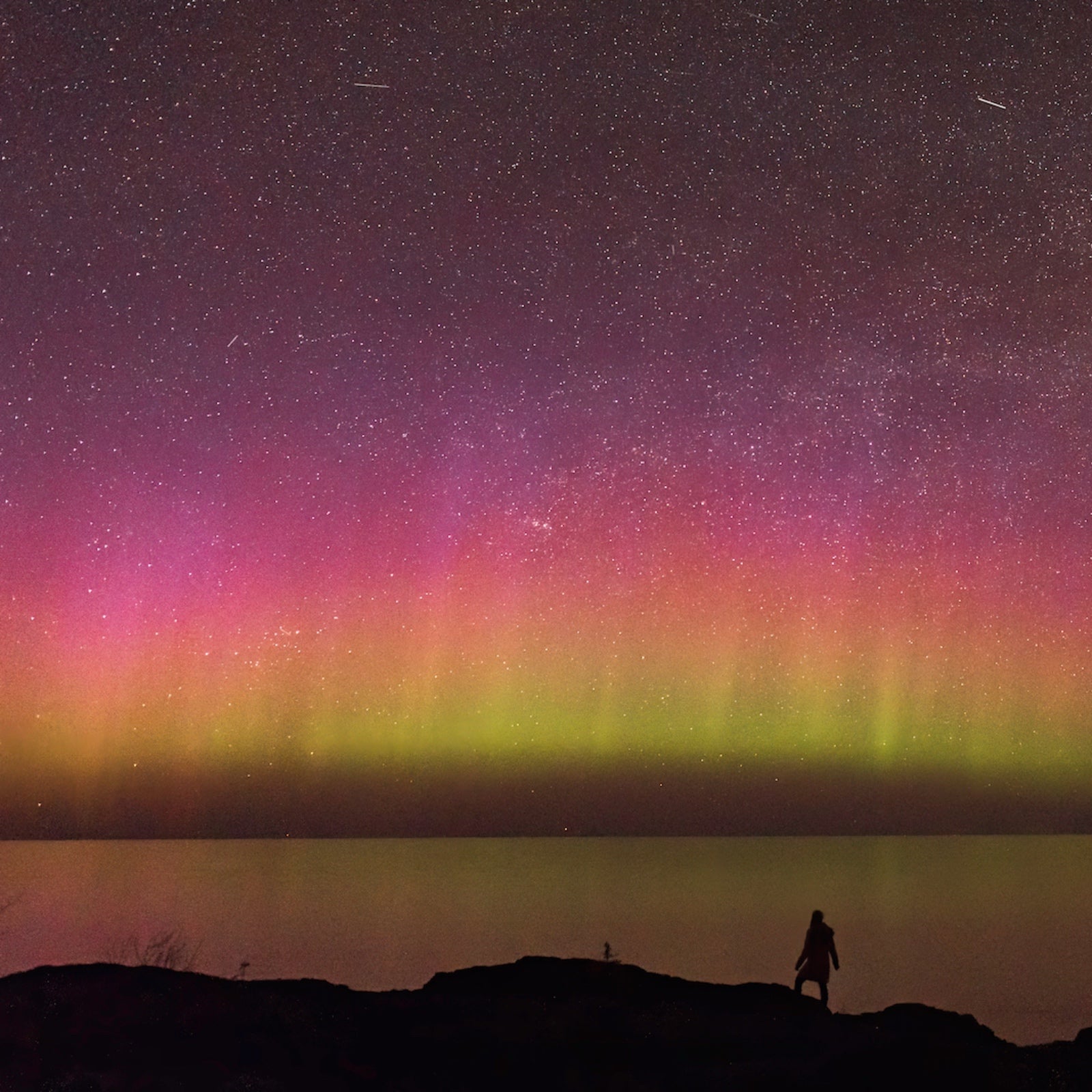
Heading out the door? Read this article on the Outside app available now on iOS devices for members! >","name":"in-content-cta","type":"link"}}'>Download the app .
In the decade I’ve been aurora-hunting around the globe, from the fjords of Greenland to the waterfalls of southern Iceland, never once did I expect to catch a strong and colorful overhead display of northern lights from my neighborhood park in light-polluted, low-latitude Cleveland.
But that’s just what happened during the dazzling aurora show from May 10 to 11, a surreal event that brought green, pink, and red auroras to nearly all 50 states (including Hawaii)—the result of the strongest geomagnetic storm in over 20 years, according to NASA . In fact, our current solar cycle is more powerful and active than first predicted; it’s sparking grander than anticipated aurora displays around the world, including many at lower latitudes in states like Colorado and Texas.
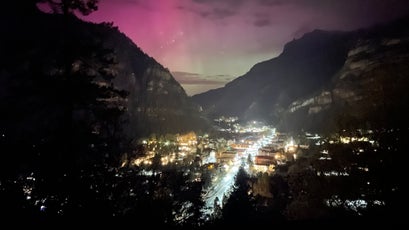
More dramatic nights of this nature in the lower 48 lights could be in store—and soon. According to space-weather experts, the predicted boom in aurora activity is only beginning.
Why is this happening now? Briefly: The sun runs through roughly 11-year stretches of activity, known as a solar cycle. Scientists now believe that this cycle’s peak—called the solar maximum—will likely happen in late 2024, continue through 2025, and potentially even into 2026. Last month’s show could be a mere preview of a busy aurora year ahead, and it’s keeping avid lower 48–based northern lights hunters, like me, on our toes. Want to join us?
Consider this your crash course in all things aurora chasing. I’m sharing my exact method for tracking these elusive lights in the contiguous U.S., with details on the best space-weather experts to follow and the top places to catch the spectacle.
How Auroras Work

First, to understand how to chase the northern lights, it’s important to know a bit of the science behind these occurances.
Storms on the sun’s surface, which present as dark sunspots, catalyze the lights we admire on earth. These weather events fling charged particles into the solar system as solar flares (quick bursts of light and radiation) and powerful coronal mass ejections, also known as CMEs (eruptions with billions of tons of plasma, which often include solar flares). When solar winds quickly push these particles in our direction, they hit earth’s atmosphere and react with gases like nitrogen and oxygen to create colorful ribbons of light, which usually congregate in auroral ovals around the north and south poles.
According to the National Oceanic and Atmospheric Administration (NOAA), CMEs generate earth’s most significant geomagnetic storms—measured on a scale from G1 (minor) to G5 (extreme)—which are associated with vibrant northern and southern lights. The major mid-May event we saw in the U.S. sparked from at least seven CMEs and numerous strong flares. Many of these CMEs simultaneously struck our atmosphere on May 10, causing the kind of G5 geomagnetic storm we haven’t seen since 2003, according to NASA . A dark sky, thanks largely to a dim waxing crescent moon, made the show even brighter
All that’s to say: Although last month’s event was rare, we could absolutely see this again, or several more times, throughout solar maximum. But you don’t need the solar storm of the decade to enjoy northern lights in the lower 48. I successfully caught a less talked about aurora show on Michigan’s Upper Peninsula just a few days before the historic mid-May show. Here’s how you can do the same.
Important Aurora-Tracking Numbers
If you’ve read any news blasts about potential aurora sightings, you’ve likely seen one measurement: Kp. This metric, which stands for planetary K index and runs from Kp0 (quiet) to Kp9 (strong), measures the severity of disturbances in earth’s magnetic field. I track Kp with the app SpaceWeatherLive and think of the index as the first step in aurora chasing; it can help you determine whether or not lights may appear from your viewing location. This NOAA map is particularly relevant:
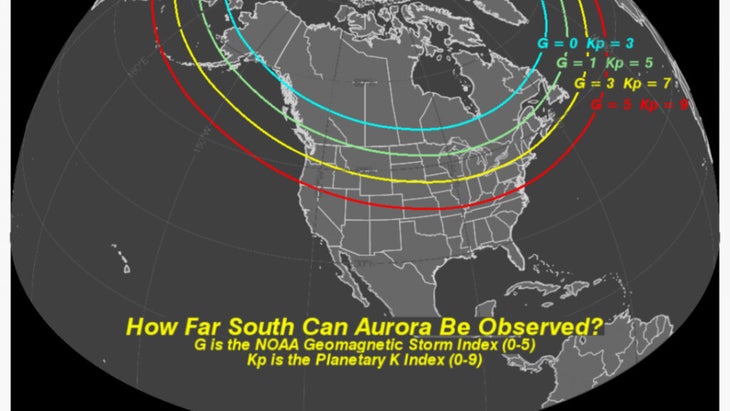
I also use SpaceWeatherLive to monitor Bz, which indicates the magnetic orientation of solar winds. It’s more accurate for determining real-time lights probabilities, especially in the continental U.S. A negative Bz (anything below zero, such as -10nT), means the solar winds are more likely to latch onto earth’s magnetic field and create auroras. A rule of thumb: the more negative the Bz, the better your odds—and the likelier you are to spot them in lower latitudes.
Solar wind speed and density are also important, and shared in aurora apps, too. Quicker winds typically create stronger storms with eye-popping lights. Additionally, the higher the density of solar winds (e.g., the more charged particles), the brighter and more powerful the ribbons.
Another thing to keep in mind with aurora predictions is timing. It needs to be dark outside for visible auroras, yet the arrival of a CME is tough to pin down; sometimes they hit earth within a day, other times it takes several, according to NOAA . Predictions made days, or even hours, in advance are so-so, especially for chasers in the lower 48, since we need more things—ample storm strength and Bz, for example—to line up for a sighting. That’s why I’ve honed my own tracking system, which has resulted in multiple successful lower-48 chases each year for the past four years.
My Process for Tracking the Northern Lights in the Lower 48
1. download the right apps..
As I mentioned, I swear by SpaceWeatherLive , a free app that provides data on not just Kp, but Bz, solar wind speed, and density. I also receive alerts from the app following any solar flare or CME. Aurora Alerts also provides these measurements in an easy-to-understand visual format.
2. Next, look to the experts.
When I receive multiple alerts within a day or two (the pinging was nonstop in the lead-up to May 10), I turn to my favorite space-weather professionals for their expert analyses. Most share their insights on X (formerly Twitter), including Chris Wicklund , the NOAA Space Weather Prediction Center , SpaceWeatherLive , and Space Weather Watch .
3. Use a dark-sky map to determine the best viewing location.
It’s unusual to have auroras sashay overhead in the contiguous U.S.; often the show is happening hundreds of miles away, near the poles, so any pillars you see are at a distance. In America, they appear closer to the northern horizon, so to see them you need a viewing spot with minimal north-horizon obstructions, like a large lake. ( Here are some ideal places to chase the northern lights in our national parks —recommended perches included).
You also want a viewpoint that’s far from light pollution. Sure, during the powerful May 10 show, the aurora borealis was strong enough to break through artificial lights in places like Cleveland, but like everything about that strong storm, it was a rarity. Use this dark-sky map to find a spot that’s green or, better yet, blue or gray. Not only will this increase your odds, but it will offer locations where colors are more visible to the naked eye, as light pollution dilutes the vibrancy.
If aurora experts confirm the likelihood of lights, and I’m in a location where I could potentially see them, I prepare for a long night—blankets and snacks included.
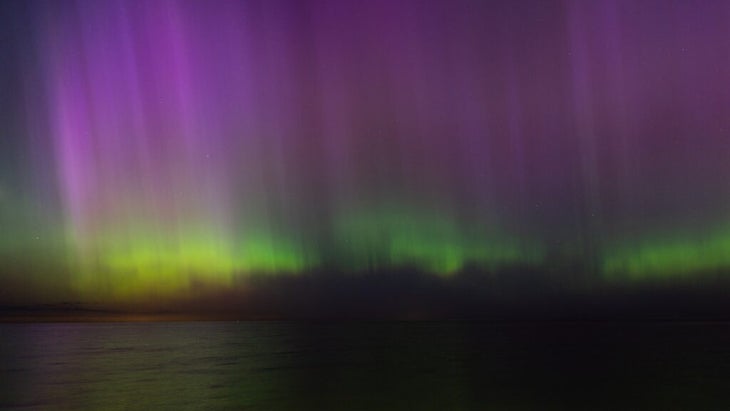
4. Find a north-facing viewpoint or travel to a more northerly locale.
For potential light shows visible in my home city, Cleveland, I already have a few north-facing viewpoints I’ve scouted over the years. But more commonly I’m chasing lights during trips to Michigan’s Upper Peninsula. During these getaways, I strategically book accommodations or campsites with north-facing views over a lake. That way I can easily roll out of bed or my sleeping bag to scout.
5. Find an online aurora interest group.
When it’s finally time for the lights—which can happen as soon as it’s dark, although NOAA says that between 10 P.M. to 2 A.M. are historically best—I head to the Great Lakes Aurora Hunters Facebook group (pending cell service). This online gathering unites over 80,000 lights chasers from the Midwest and beyond. Another more geographically widespread option is Northern Lights Alert , which includes enthusiasts from around the world. Members share real-time updates of what they’re seeing in the sky, and the excitement is contagious as the Bz dips negative. This community is also a great resource to keep tabs on what’s happening nearby or in a location with a similar latitude.
6. Put your phone camera to work as a spotting tool.
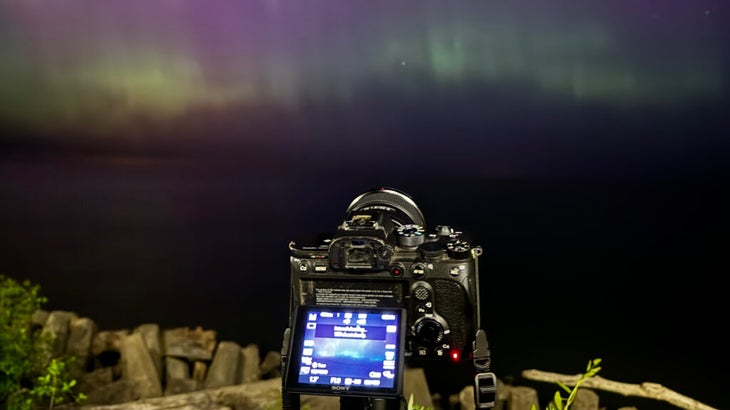
If I don’t have cell service or Wi-Fi, I use my iPhone camera to intermittently scout the horizon. Cameras, even those on smartphones, are more sensitive to color and light than our eyes. My iPhone picks up the lights before my eyes do. During some trips, I set my alarm to wake me up every hour for a test shot. This led to one of my all-time favorite shows during a backpacking trip on Michigan’s Isle Royale National Park .
7. Learn how to shoot nighttime photos.
I photograph auroras with mirrorless cameras, like the Sony A7R IV , known for its low-light prowess, as well as a wide-angle lens. A tripod is also essential for stabilization, since I need a long shutter speed— usually between two to ten seconds, depending on how quickly the auroras are moving—to let more light in. Shaky hands make the image blurry and out of focus. The latest smartphones are increasingly impressive during low-light situations, too.

If you’re using an iPhone—the best cameras for this kind of shooting are on the iPhone 12 or newer iterations—night mode will automatically activate beneath a dark sky. Click the half-moon icon to turn the shutter to at least three seconds (or even better, ten seconds for a brighter photo). Keep the image crisp by setting your phone on a tripod or makeshift one. (For example, I took this Isle Royale time-lapse video by stabilizing my camera on a packing cube full of socks.) Finally, if you have it, make sure your iPhone’s raw mode is activated so you have more editing control. (Check out a quick aurora-photography tutorial here .)
I’ve been successfully chasing the northern lights in the lower 48 since 2020 using this tracking system. That said, nothing is guaranteed. If you really want to see the aurora borealis and have the means, I recommend traveling far north. From fall through spring, your odds of catching the lights are significantly higher in hot spots like Alaska, Iceland, or Norway, where aurora tours and lights-friendly accommodations abound. Plus, the intensity and colors are much more striking there, given the show usually happens right above your head.
If this sounds up your alley, here are some of my favorite places around the world to chase the northern lights.
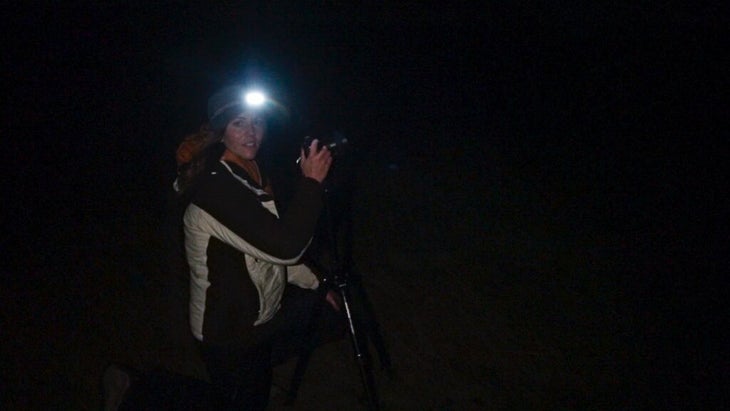
Stephanie Vermillion is an adventure and astrotourism writer and the author of the upcoming National Geographic book 100 Nights of a Lifetime: The World’s Ultimate Adventures After Dark , out December 3.
When you buy something using the retail links in our stories, we may earn a small commission. We do not accept money for editorial gear reviews. Read more about our policy.
Popular on Outside Online

Enjoy coverage of racing, history, food, culture, travel, and tech with access to unlimited digital content from Outside Network's iconic brands.
Healthy Living
- Clean Eating
- Vegetarian Times
- Yoga Journal
- Fly Fishing Film Tour
- National Park Trips
- Warren Miller
- Fastest Known Time
- Trail Runner
- Women's Running
- Bicycle Retailer & Industry News
- FinisherPix
- Outside Events Cycling Series
- Outside Shop
© 2024 Outside Interactive, Inc
Another chance to see the aurora? Predictions say this weekend could be good.
Forecasters at the space weather prediction center are closely watching sunspots for the next chance at northern lights..

BOULDER, Colo. ‒ Skygazers eager for their next chance to see the northern lights have a powerful ally on their side: a small group of space weather forecasters monitoring the sun for the next big solar explosion .
Last month's thrilling display of the aurora seen as far south as Florida was highly unusual. But experts say the next several years could see even bigger displays as the sun enters the height of its typical 11-year sunspot cycle.
And in a secure facility in Boulder, forecasters with the federal Space Weather Prediction Center are eagerly awaiting its next move. Inside the center, which is part of the National Oceanic and Atmospheric Administration, giant screens display images of the sun through various filters, from visible light to its powerful magnetic field and the solar flares constantly boiling off its surface.
"We're always just trying to figure out what's going to hit our little blue marble," senior forecaster Shawn Dahl said.
Extra-strong sunspots, which are often accompanied by the sun ejecting vast amounts of superheated plasma, can trigger auroras but also pose a danger to satellites, airplanes, GPS navigation and the power grid.
While people living near the poles ‒ from Alaska, Iceland and Finland to New Zealand and Australia ‒ often see the aurora during the winter, last month's display was unusual because it was visible in many places that don't typically see them, especially during late spring.
Experts say the typical viewing patterns are likely to continue, but the large sunspot makes it more likely another massive display could happen soon across vast swaths of the United States.
Typical aurora displays are forecast with only a few hours advance notice, but large ones like last month's were generated by a solar explosion that could be seen by forecasters days before it splashed across Earth's atmosphere.
Tapping into data from a constellation of satellites aimed at the sun, forecasters are again watching the sunspot group known as Region 3697, along with solar flares and what are known as coronal mass ejections ‒ massive eruptions of plasma so strong they have their own magnetic fields.
Displayed as a gray disturbance on the sun's surface, it's hard to understand the region's scale: That sunspot cluster is 15 times larger than Earth. And the sun is 93 million miles away.
From 93 million miles to a field near you
Dahl said that while the center's forecasts are widely used by electric utilities, satellite operators and other large organizations, they are only now becoming familiar to ordinary people.
On May 10, as the aurora display was just about to begin, a nephew doing spring planting in North Dakota called to report the GPS on the tractor was off by 12 feet when it's usually accurate to a centimeter, Dahl said.
"This is the first time in my life I've gotten a space weather report from a family member," Dahl said. "I'm used to getting called, being asked: 'How much snow are we going to get? What's the threat from hail today?' And he's telling me the system was taking them in circles."
In last month's event, the impact from the plasma was so strong it temporarily shoved the Earth's magnetic field closer to the planet, causing some satellites to lose their orientation. Government-funded satellites are typically built to withstand solar storms and have multiple redundant navigation systems, but smaller, cheaper ones may not.
The Environmental Defense Fund, which earlier this year launched a methane tracking satellite from California, temporarily halted some calibration work on its $88 million device while the storm passed, said Peter Vedder, senior director of mission systems for MethaneSAT. Built in Colorado, the 770-pound satellite is still getting into its operating location about 360 miles above the Earth.
Though light from solar flares and coronal mass ejections reaches the Earth in about 8 minutes and charged particles known as protons arrive in 15 minutes, ejected particles may take two to four days to hit and be deflected by the Earth's magnetic field. Usually, auroras are most pronounced around the poles because of the shape of the Earth's magnetic field.
"You can't steer yourself around it, you can't fly around it. You have to design (the satellite) to be robust enough to handle it," Vedder said. "You tend to turn off some more sensitive electronics and wait it out for a day."
Messing with communications systems
Starlink, the Elon Musk company that has launched more than 4,000 satellites to provide worldwide internet service, said it had weathered the May storm without incident: "Starlink satellites are under a lot of pressure, but holding up so far," Musk posted on his social media platform, X, on May 11.
In 2022, 38 newly launched Starlink satellites burned up after a mild solar storm created unexpected conditions in the Earth's upper atmosphere. Starlink and forecasters at the prediction center in Boulder now work more closely to monitor potential disruptions, especially during satellite launches.
Starlink satellites orbit closer to Earth than many other satellites, and scientists discovered that solar storms can temporarily "thicken" that area, creating unanticipated drag.
Solar flares and coronal ejections also can affect long-distance power lines used to transmit electricity. Because solar storms jostle the Earth's magnetic field, they can create power surges that burn out transformers and other equipment.
In 1989, an estimated 6 million Canadians and northern New England residents lost power for nine hours as a result of solar-induced surges. With warning, utilities can take steps to reduce the damage, and one of the largest transmission groups recently installed a first-of-its-kind system to automatically protect its power lines.
The most powerful geomagnetic storm in history, 1859's Carrington Event, sparked auroras so bright they reportedly woke gold miners inside their tents in Australia, burned out telegraph equipment and lit the sky brighter than the full moon.
Solar storms also alter how radio waves travel through the atmosphere and can mess with radar and radio communications.
Dahl said commercial airliners often must take longer routes closer to the equator during solar storms so their radio communications with air traffic control officials remain reliable. And planes taking over-the-pole flights may have to detour to avoid heavier-than-usual radiation exposure.
Predicting space weather can be challenging
Leading up to and during the May storm, space weather forecasters held regular briefings with power utilities and other groups to answer questions, and six hours before the storm's "strong, sudden arrival" drove home warnings of just how powerful it would be.
"That gave them six hours of lead time, to say this is going to happen, be ready," Dahl said. "And they were ready. There were plenty of effects, they were busy ... and fortunately, as far as we know, they did not suffer any bulk system impact. "
In the future, Dahl said, space weather forecasters probably will play a role in safety considerations for space tourists and for NASA's efforts to return to the moon and send astronauts to Mars. He said upcoming science satellite launches will improve the center's space forecasts but noted how hard it can be to accurately forecast the weather on Earth.
"We're forecasting stuff from 93 million miles away, so it's very difficult. And our science is limited," Dahl said. "We can do a great job of predicting the probability that the flare will happen, and if so, what level it might get to, and the same with radiation storms, but we have no way of knowing that a flare is imminent. That science doesn't exist. We have to wait for them to happen."
Dahl, an amateur astronomer and night sky photographer who missed the May 10 display because he was working, said he's hopeful for a new display. Dahl also noted that sunspot activity is expected to increase for the next year, then ramp down again, giving skywatchers plenty of opportunities for more displays.
"We still haven't reached the peak," he said. "We're not even close to being done with this cycle yet."
Solar flares vs. coronal mass ejections: Here's which once gives us the northern lights

Solar flares are nothing new to Earth and we have experienced quite a few this year, but this weekend the sun let out a coronal mass ejection which is something a bit different.
On Saturday, the sun emitted a coronal mass ejection (CME). Which are large expulsions of plasma and magnetic field from the sun's atmosphere known as the corona, according to Space.org. The CME also takes a bit longer to get to us compared to a solar flare as well.
While the CME was first reported on Saturday we won't see the affects on Earth until today in the form of the aurora borealis.
Here's everything you need to know about this and other space weather topics.
What is a coronal mass ejection?
These slow moving expulsions of plasma and magnetic fields can cause issues on Earth, but are often heralded as a good thing for the light show they also provide.
CMEs have been known to affect power grids, telecommunication networks and orbiting satellites and expose astronauts to dangerous doses of radiation, according to Space.com. The expulsions are also the reason we get to see the aurora borealis in the United States without having to make a very long trek north.
How fast does a coronal mass ejection travel vs. a solar flare?
A CME can reach speeds of almost 1,900 miles per second. At that speed one can reach Earth in about 15 to 18 hours. But CMEs do like to take their time to get to Earth. At the slowest speed a CME travels around 155 miles per second and can take several days to arrive, according to the Space Weather Prediction Center of the National Oceanic and Atmospheric Administration .
As for solar flares that burst forth electromagnetic radiation, they can reach Earth in a matter of minutes, according to Space.com.
Will Tennessee see aurora borealis this week?
The aurora borealis that could be produced from this latest CME would only be visible in the far north of upper Midwest States, according to the National Oceanic and Atmospheric Administration .
Tennesseans did get to see the rare sight of the northern lights in May and there is a chance we can see them again over the next couple of years or so.
NASA scientists predict, the solar maximum, or the next peak in solar activity, will occur in July 2025. This means the northern lights will start to get stronger and more frequent as the solar maximum approaches, reported USA TODAY.
What is a solar flare?
A solar flare is an intense burst of radiation from the sun associated with sunspots that release magnetic energy out into space, according to NASA . Flares can last several minutes to several hours.
These giant explosions from the sun send energy, light, and particles throughout the solar system. Sometimes this burst of energy can cause geomagnetic storms on Earth .
How often do solar flares happen?
Solar flares aren't really that uncommon. We've had multiple events occur since the start of the new year.
According to NASA, the frequency of solar flares depends on their size, with small ones erupting more often than big ones. The number of flares also increases as the sun nears solar maximum, which is currently happening.
This solar cycle is approximately 11 years of solar activity driven by the sun's magnetic field and indicated by the frequency and intensity of visible sunspots on the surface. The peak of Solar Cycle 25 started in January and goes through October , which means we could see more solar flares in the coming months.
Solar flares decrease as the sun nears solar minimum. So, throughout the 11-year solar cycle, flares may occur several times a day or only a few times per month, according to NASA.

COMMENTS
Chase the elusive aurora borealis on one of our stunning northern lights tours! Head to Iceland, Canada or Alaska and witness the nocturnal light spectacle.
Northern Lights Tour Packages. Venture to the northern hemisphere to hunt for the aurora borealis and see this breathtaking natural phenomenon first hand.
Our authentic Aurora Borealis tours in Norway, Finland, Iceland and Sweden running from late autumn, winter and early spring are the best way to see one of nature's bucket list. Travellers from the U.K and USA are connected with new direct flights starting from autumn 2021.
The Northern Lights or "Aurora Borealis" is a phenomenon that draws travellers to the windswept wilds of the some of the northernmost places on the planet. Those lucky enough to witness Mother Nature's light show are in for a uniquely breathtaking experience. Best seen as high latitudes when the sky is dark and clear, the Northern Lights ...
Where are the best places to see the northern lights? From Minnesota and Alaska to Iceland and Greenland, here are the top places to view the aurora borealis.
Discover the largest selection of northern lights tours and holidays in Iceland. Choose from various options for the surest way to see the aurora borealis.
Take a chance to witness the beautiful phenomena, Northern Lights, with scenic landscapes and great cities. Learn which locations are the best for hunting Aurora Borealis and which activities to add to your tour. Create a fairytale-like tour together with a destination specialist. Reindeer sleigh. Visiting Santa at Santa Claus Village.
With over 33 years' experience, our Northern Lights Cruises offer an unparalleled chance to see the aurora borealis. Book the cruise of a lifetime today!
Embark on the trip of a lifetime with our Northern Lights Explorer voyage. Over 33 Years' Experience & 5 Star Trustpilot Ratings. ... Aurora Borealis Husky Dinner - Evening Optional Tour ... There is no light pollution and therefore gives you a great advantage to see the Northern Lights should they appear. ...
Watch the Northern Lights dance off the mirror of the world. The most beautiful show on Earth, sit back and awe at a sight few have ever seen.
The complete guide to seeing the Aurora Borealis in Alaska: when to go, where to go, top northern lights tours, what to wear, and how to photograph.
The otherworldly aurora borealis, or northern lights, begin high in the Earth's atmosphere—at altitudes from 60 to more than 250 miles—when charged particles from the sun become trapped in ...
Experience the unbelievable colours when the northern lights move across the Arctic sky in Northern Norway. Find out where to go and the best time to see the aurora borealis.
Our northern lights 2024 guide tells you where and when to see aurora borealis throughout Europe and North America.
If you're planning to visit Norway, joining a tour is an easy and stress-free way to help you see the aurora borealis. In this guide, we share some of the most popular short and long tours to Norway northern lights that you can book for 2024-2025.
Aboard the new National Geographic Endurance on a cruise from Iceland to Greenland. Capture the beauty of the Northern Lights with a National Geographic photographer.
From the United States and Canada to Norway and Iceland, these are the best places to see the northern lights around the world.
Best places to see the Northern Lights: Northern Alaska, Canada, bits of Greenland, northern Scandinavia and northern Scotland -- all located somewhere between 66 to 69 degrees north -- are all ...
8-day independent itinerary in Alaska, that includes northern light viewing in your own private igloo at Borealis Basecamp, a ride on the iconic Alaska Railroad and a floatplane excursion past Mt. Denali.
Set sail on these itineraries to try to spot the aurora borealis. Here are seven of the best northern lights cruises.
Catching sight of the aurora borealis (often called 'the northern lights') - and time in the places they appear - is a spellbinding travel experience. So to savour every second, these are 10 best places to see the northern lights (plus the best season to travel).
Here, the most popular places to see the Northern Lights include Uttakleiv, Haukland, and Vik beaches. Just 200 miles from the Arctic Circle, Tromsø also promises resplendent visuals of the Aurora Borealis. Away from the city lights and pollution, head to the outskirts of the city or nearby islands like Kvaløya and Sommarøy for the best views.
Independent, unbiased travel advice for your Northern Lights vacation. Aurora Tracks is dedicated to helping you achieve your goal of seeing the Northern Lights. We cover everything you need to know to plan your perfect Aurora Borealis trip, including best times and best places to see Northern Lights, tours, accommodation and vacation tips.
Spectacular auroras will likely appear again in the lower 48 soon. Our expert's advice will set you up for success to see them.
Another chance to see the aurora? Predictions say this weekend could be good. Forecasters at the Space Weather Prediction Center are closely watching sunspots for the next chance at Northern Lights.
Just one month after the northern lights put on a stunning display over the continental United States, the aurora borealis will make a return to Canada and the northern U.S. Saturday and Sunday ...
The expulsions are also the reason we get to see the aurora borealis in the United States without having to make a very long trek north. How fast does a coronal mass ejection travel vs. a solar flare?